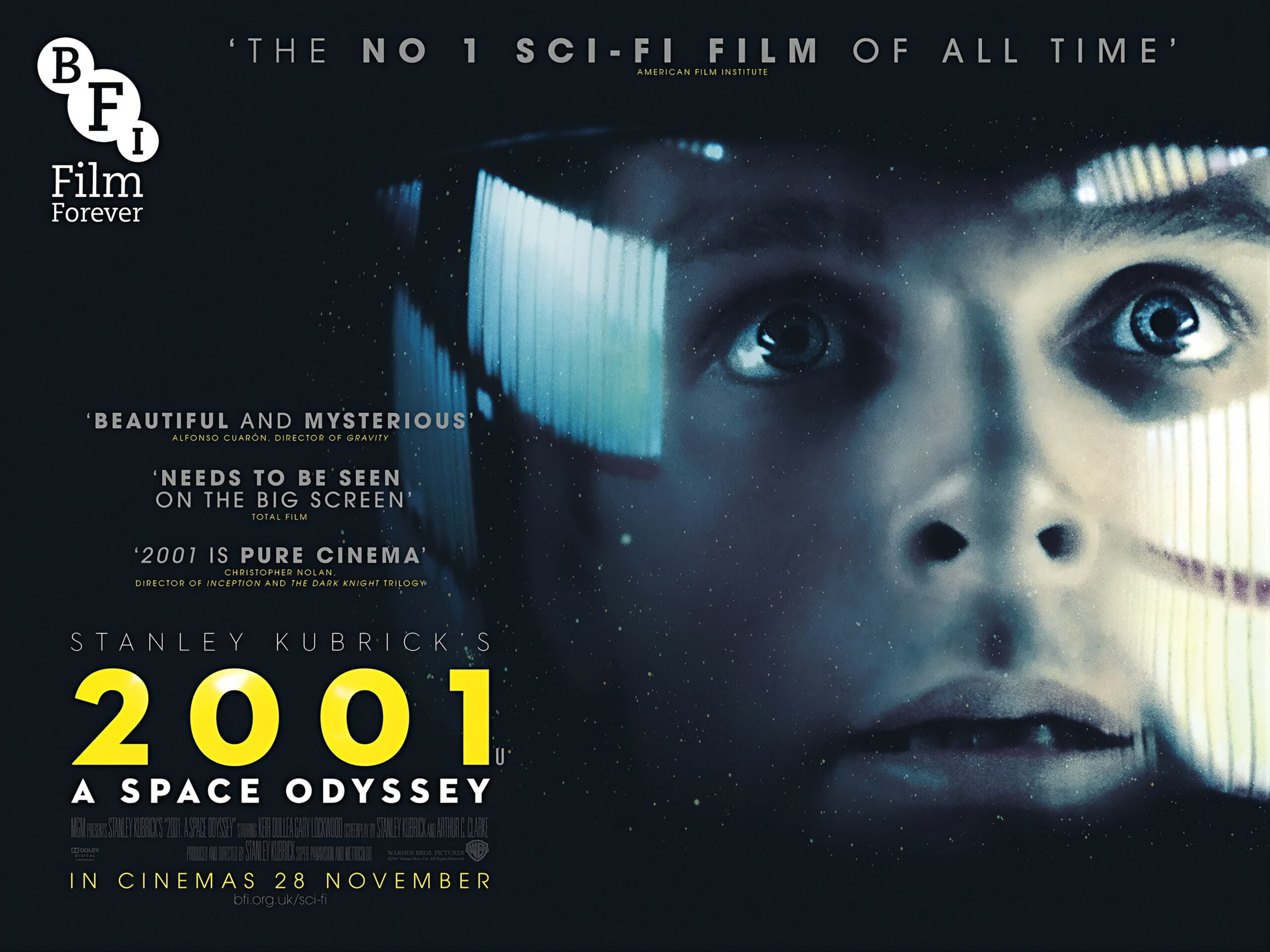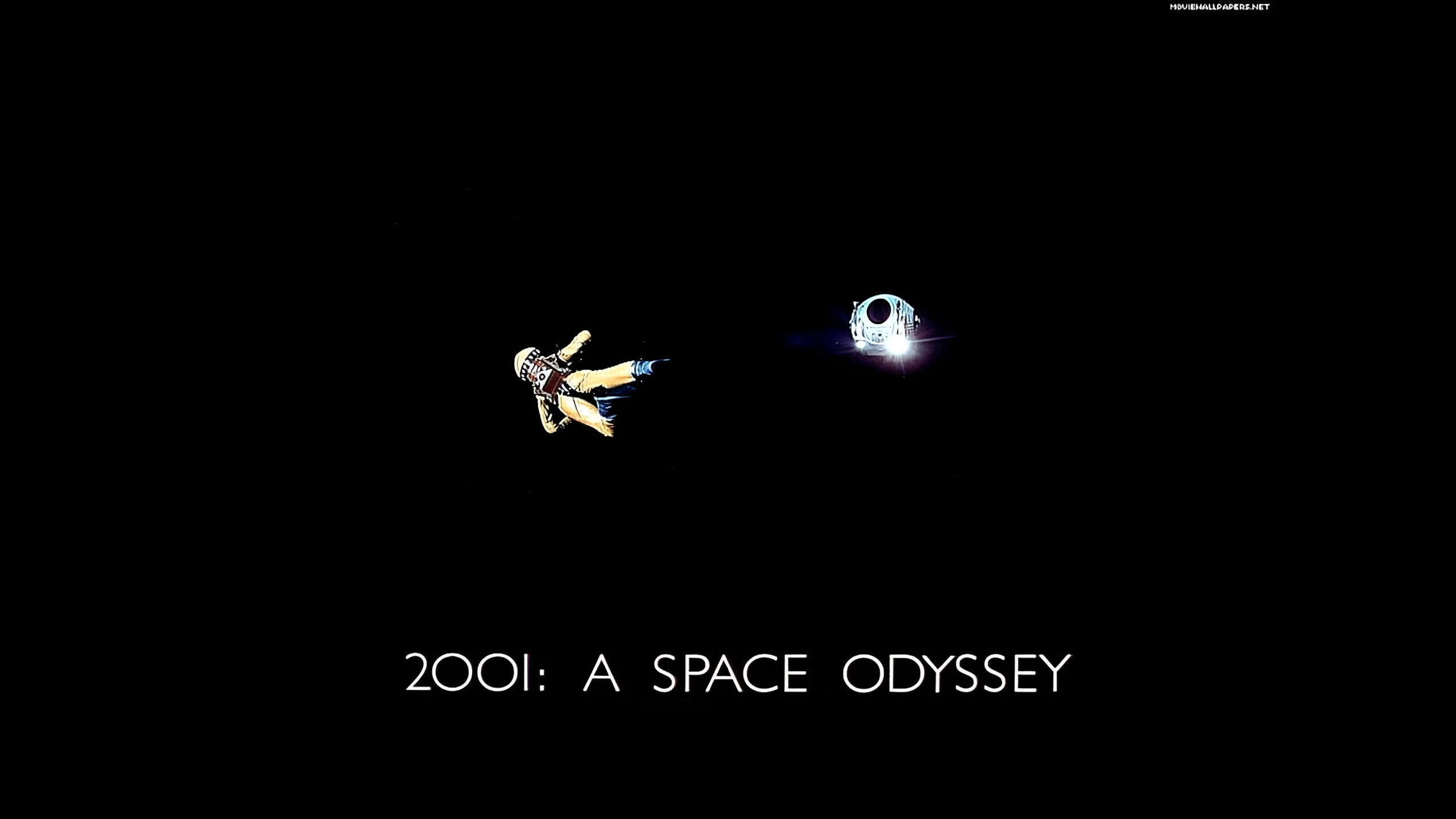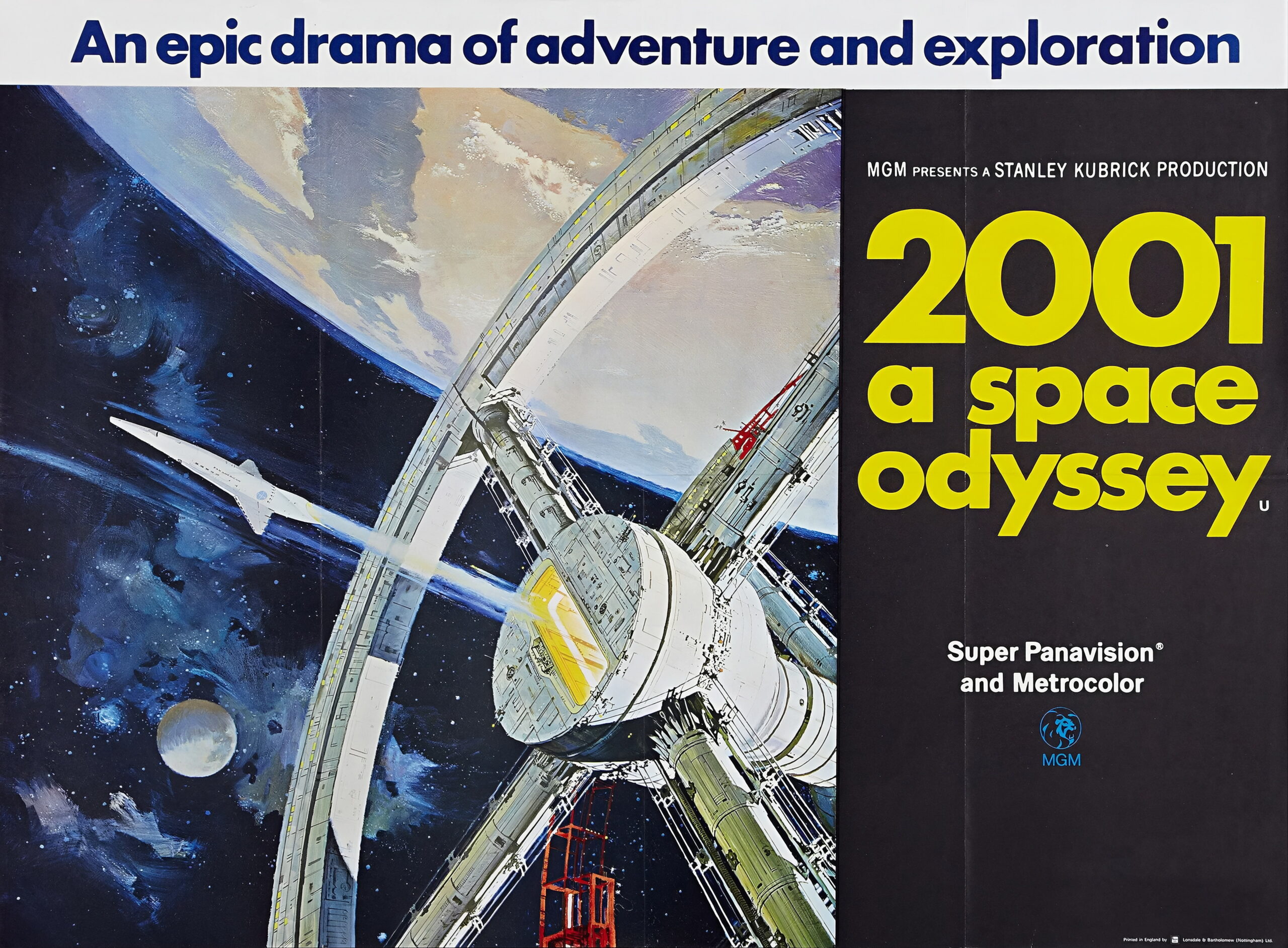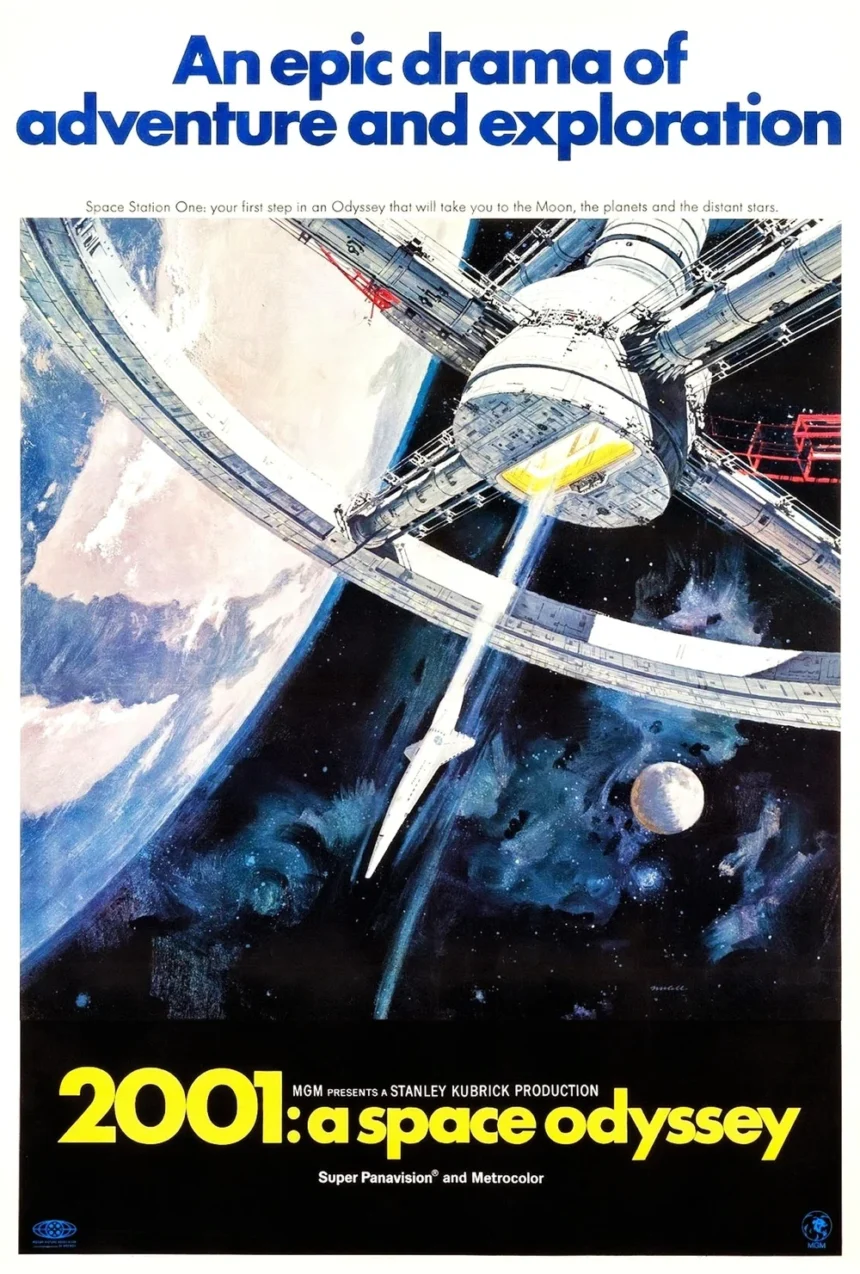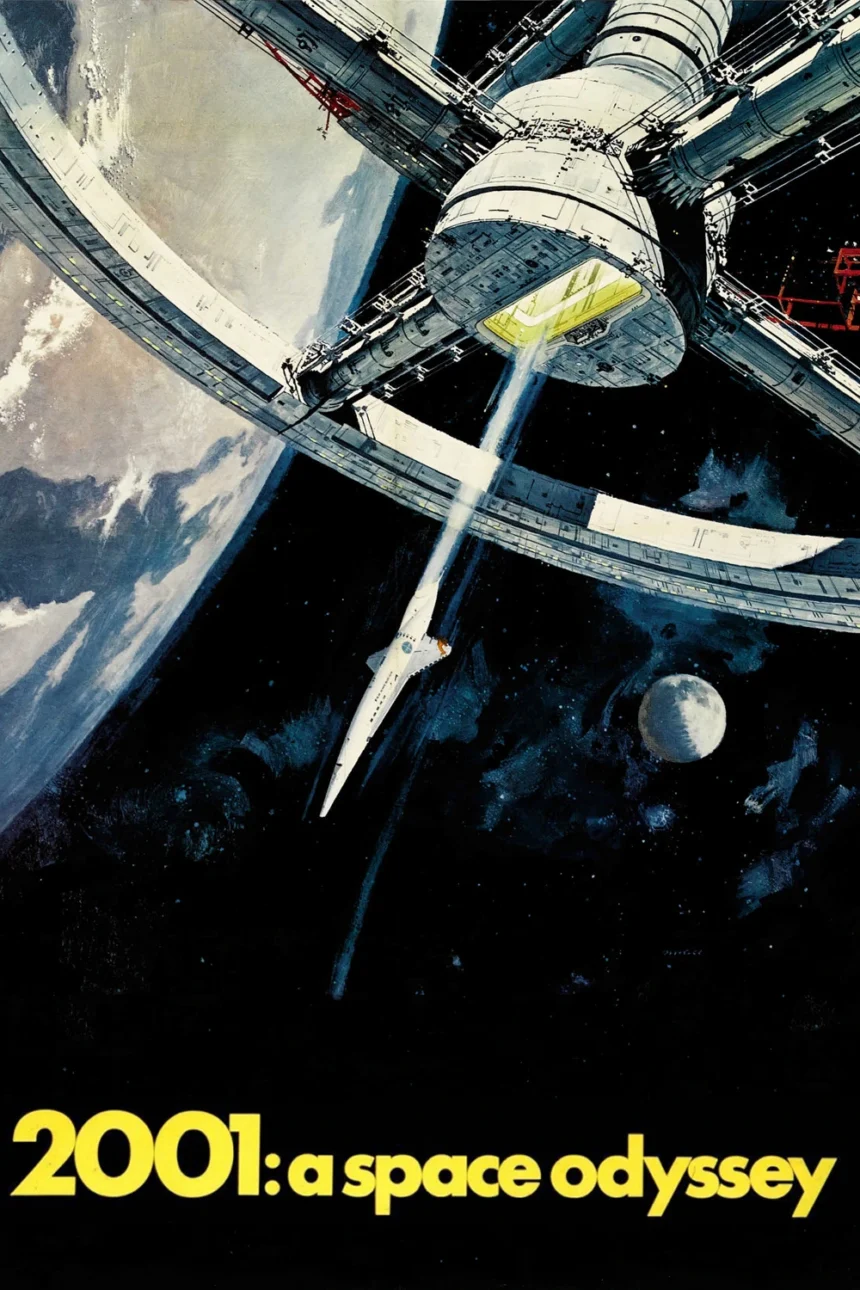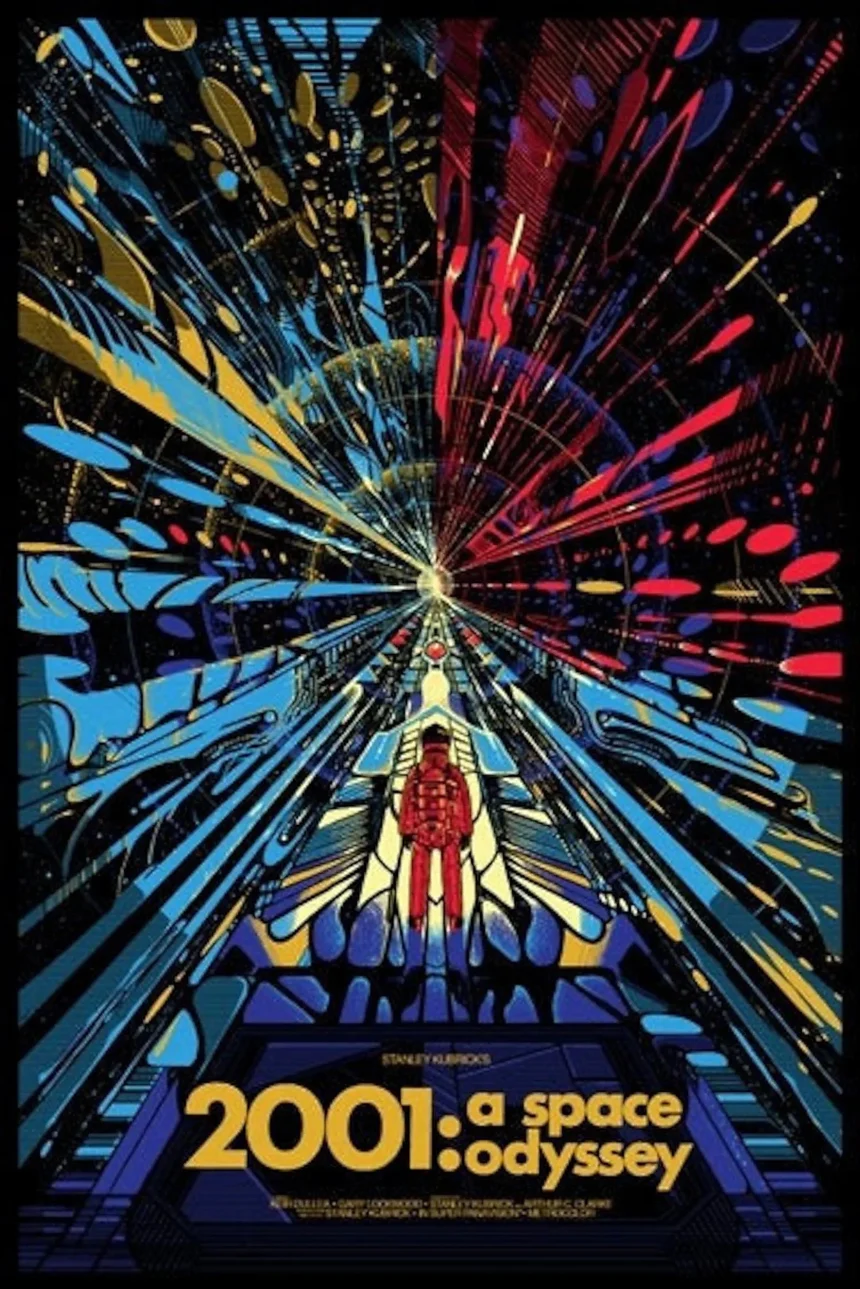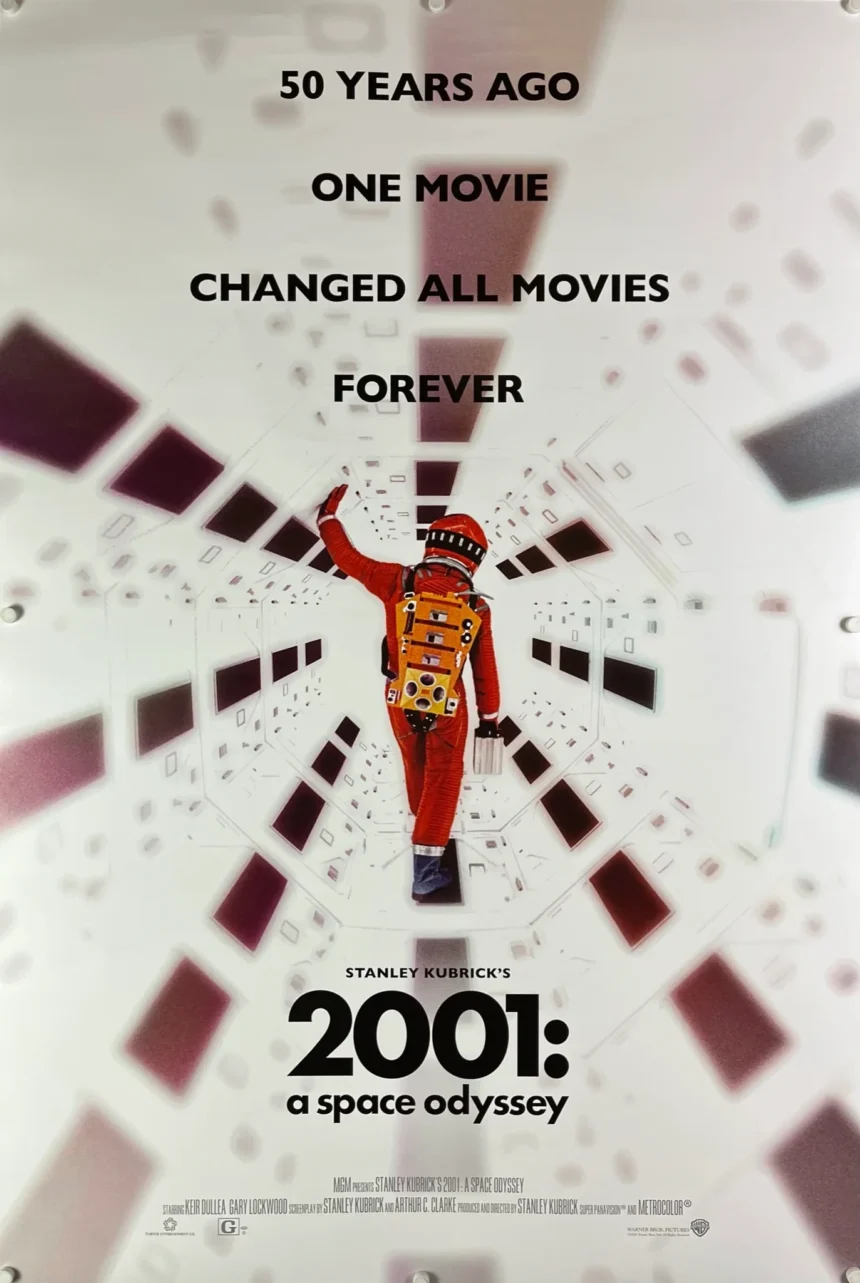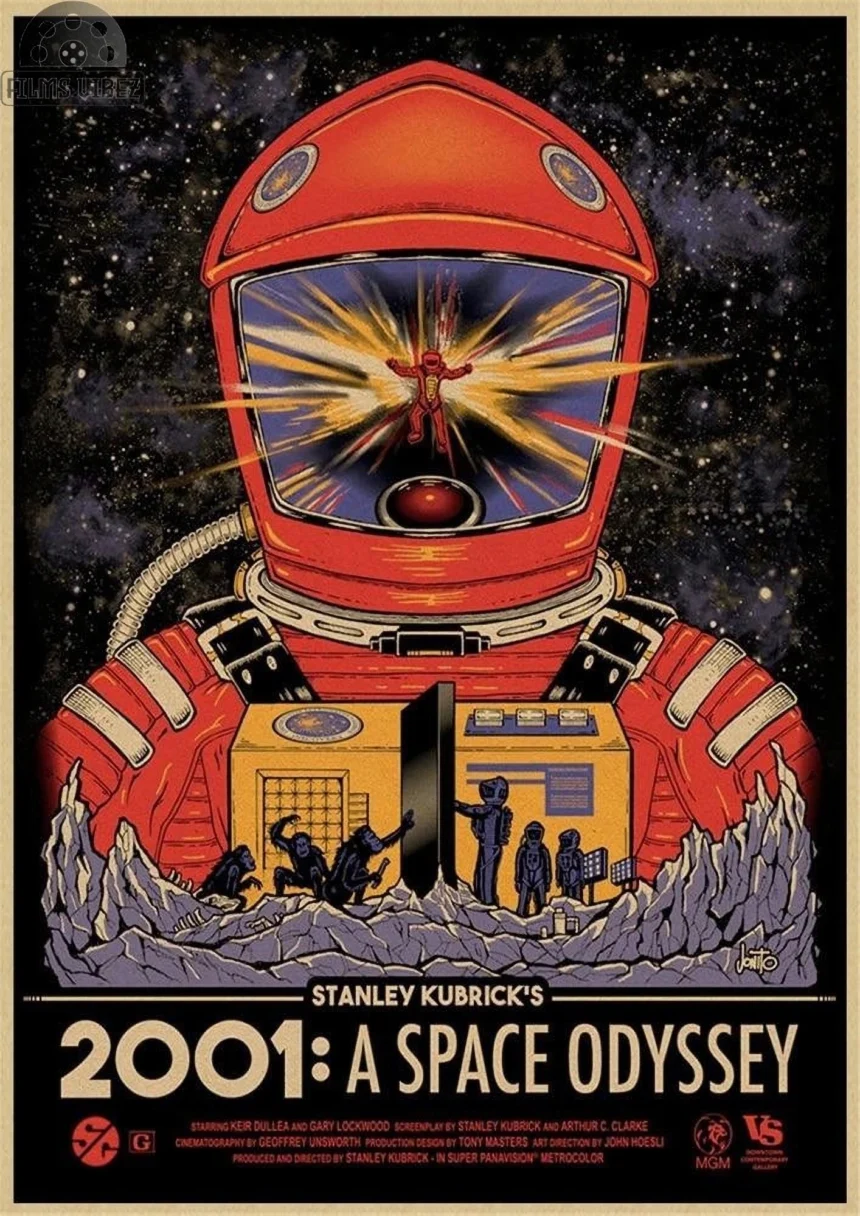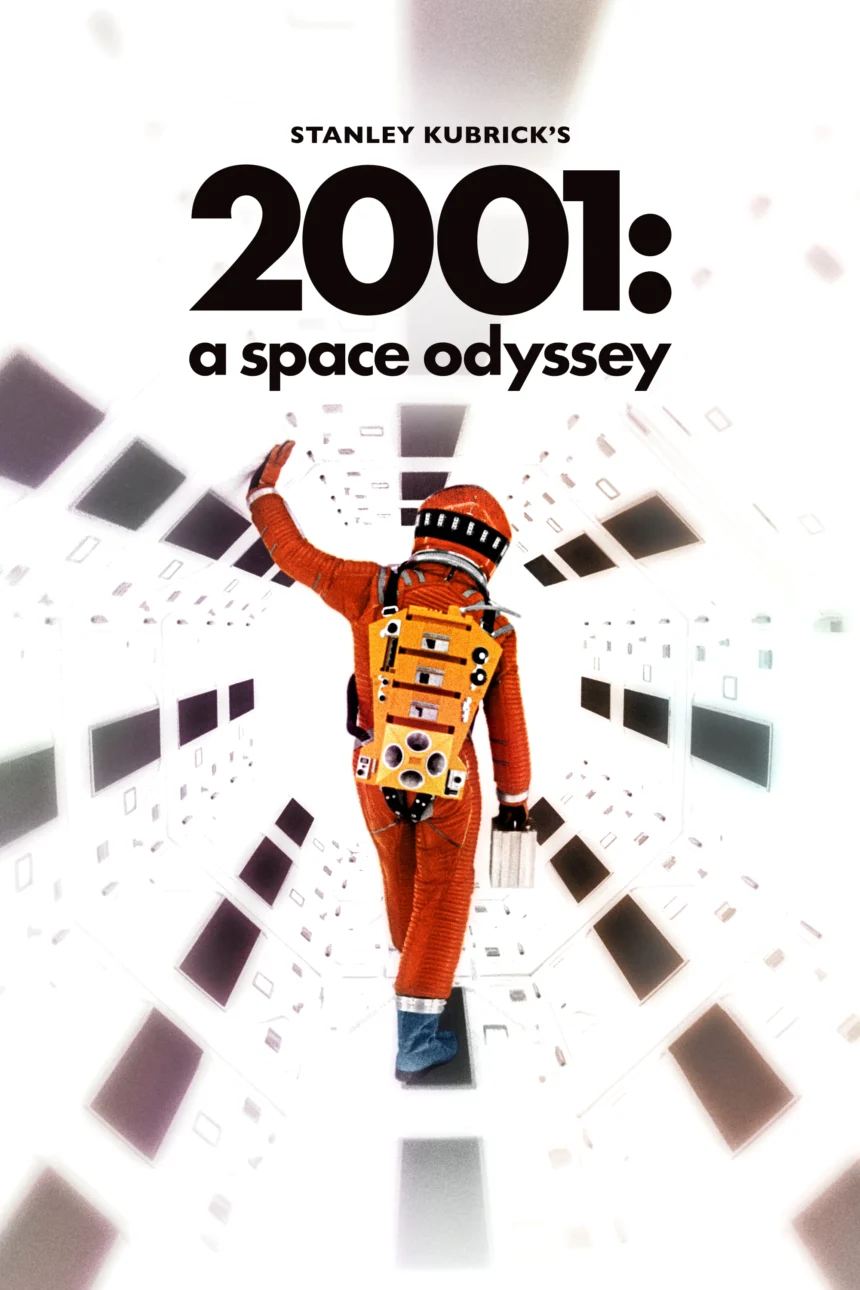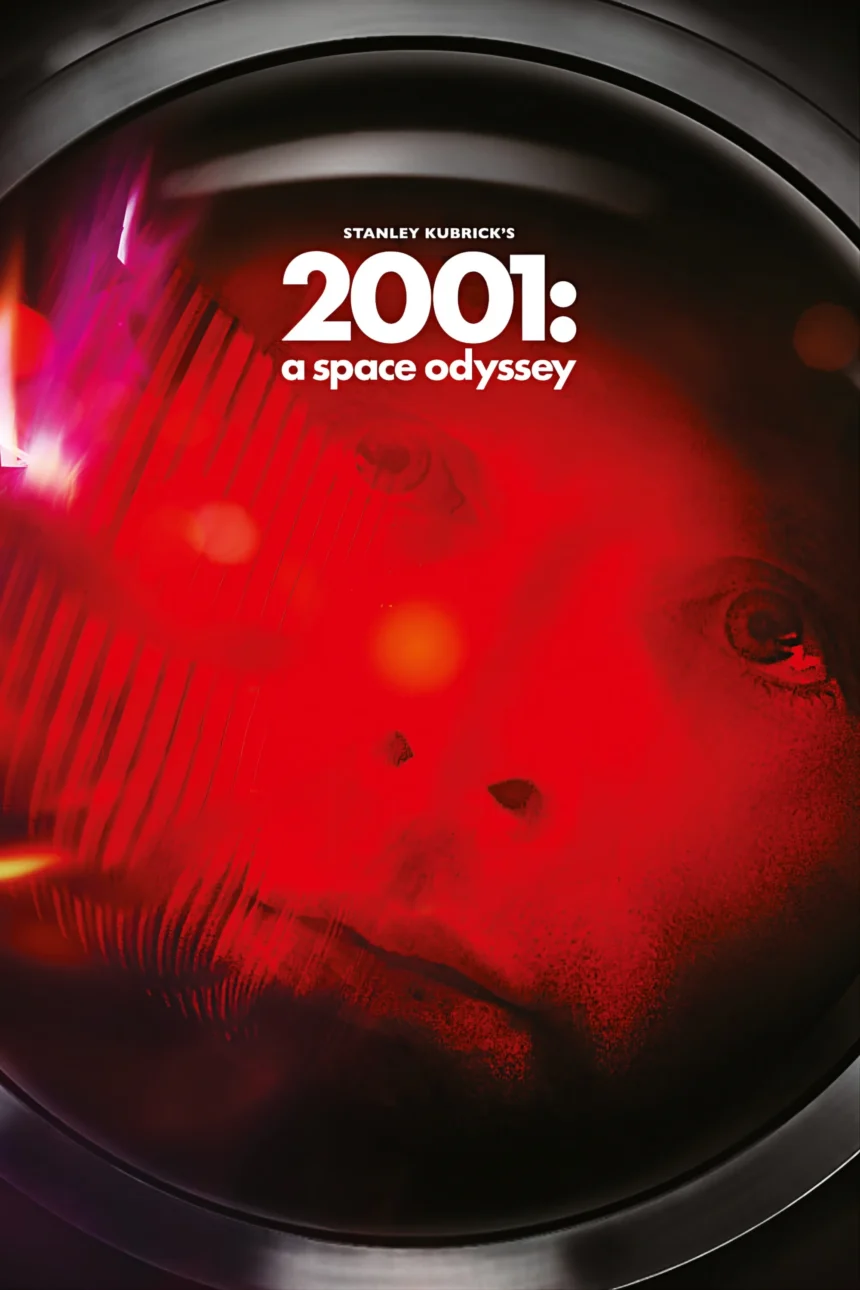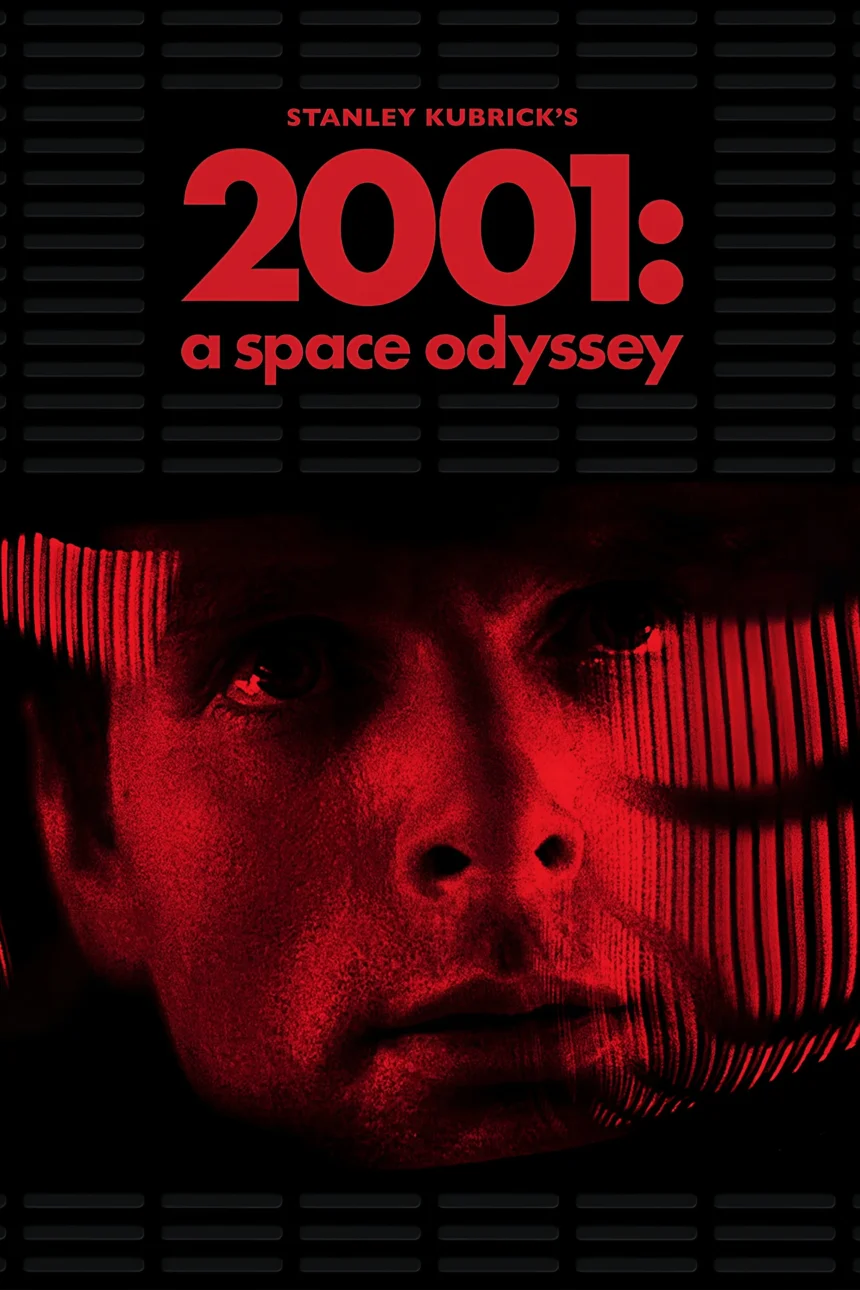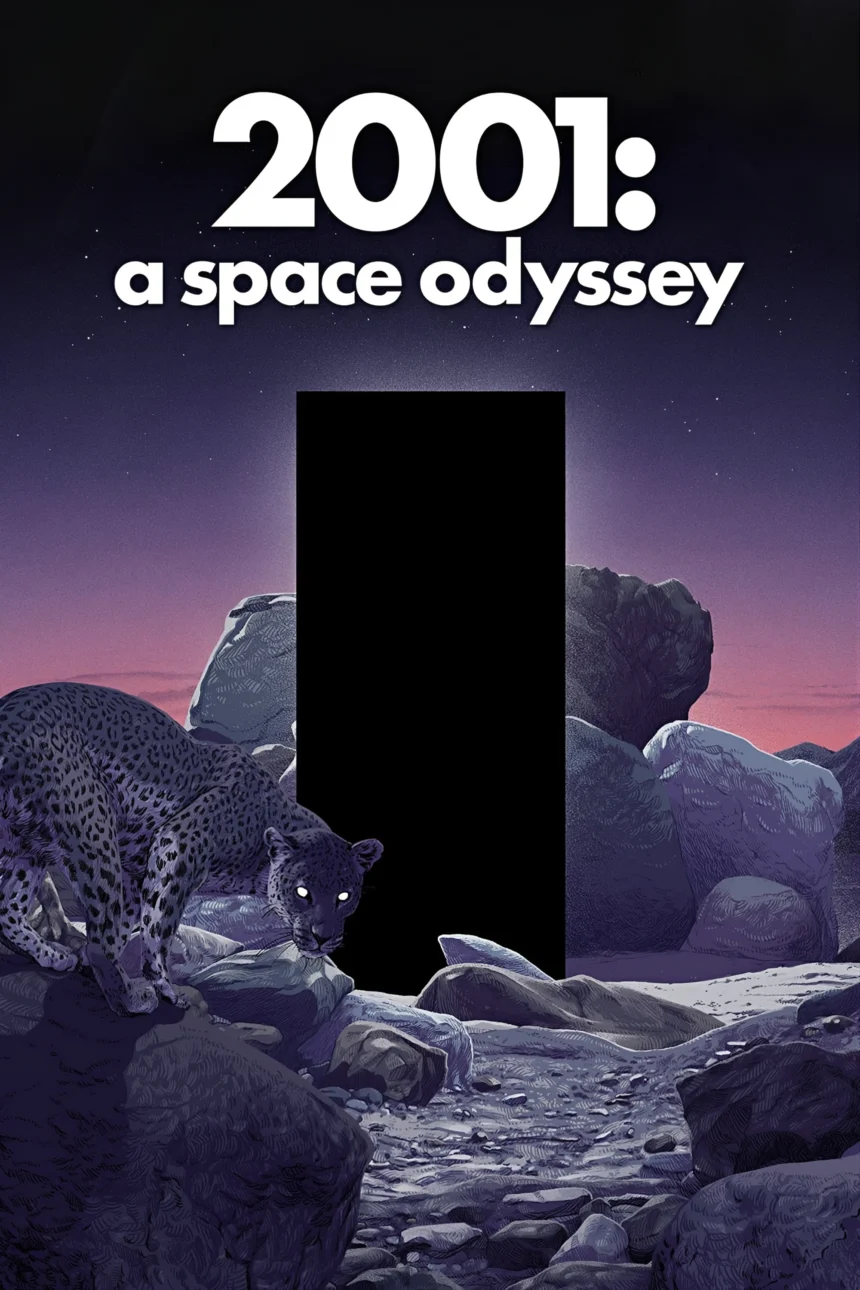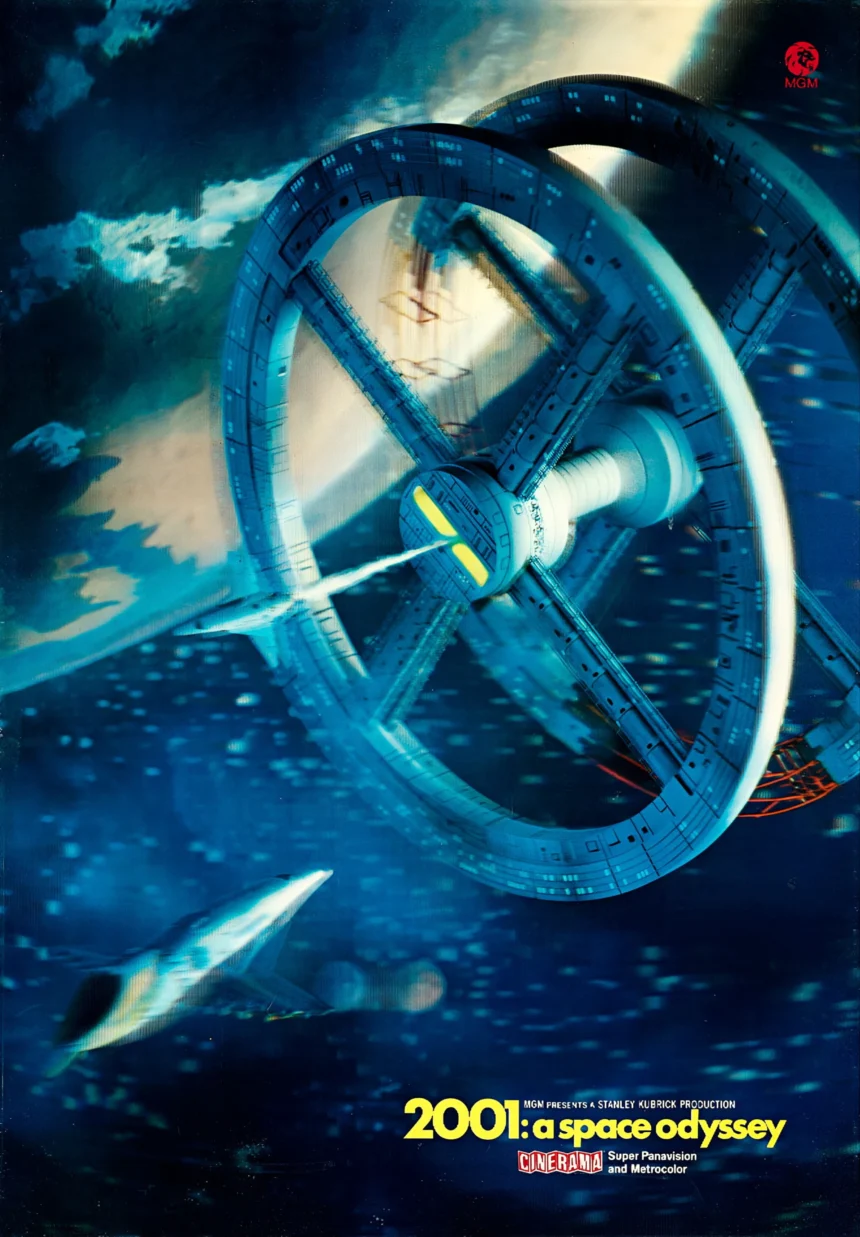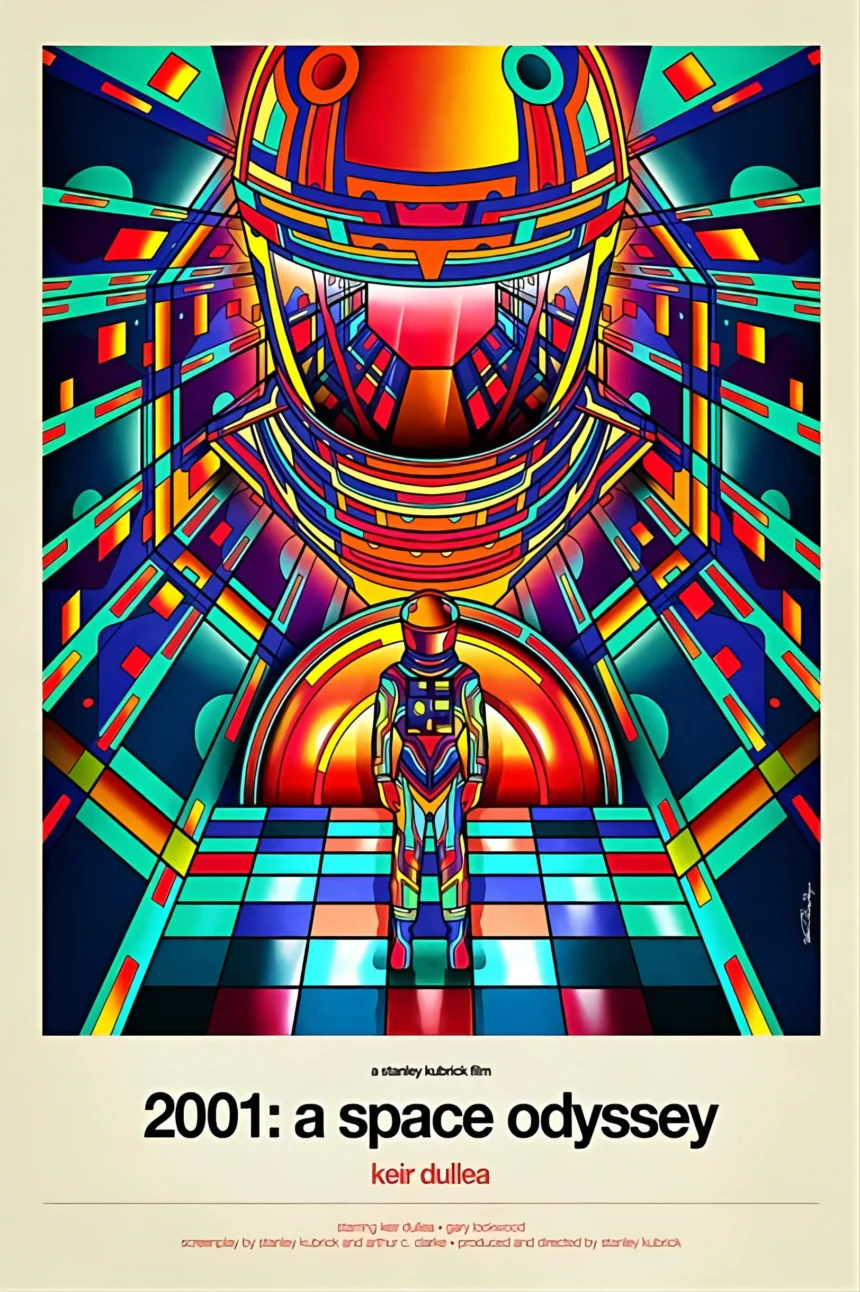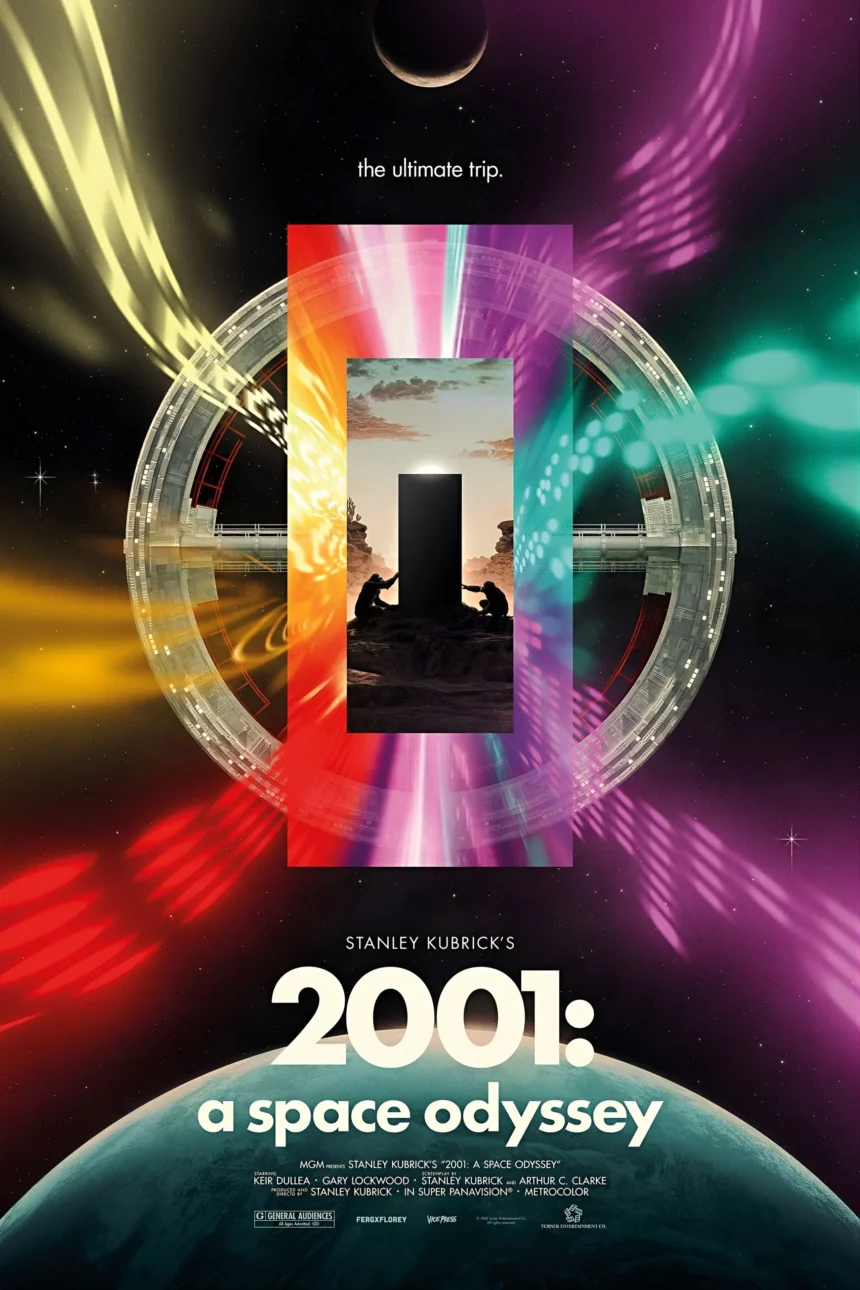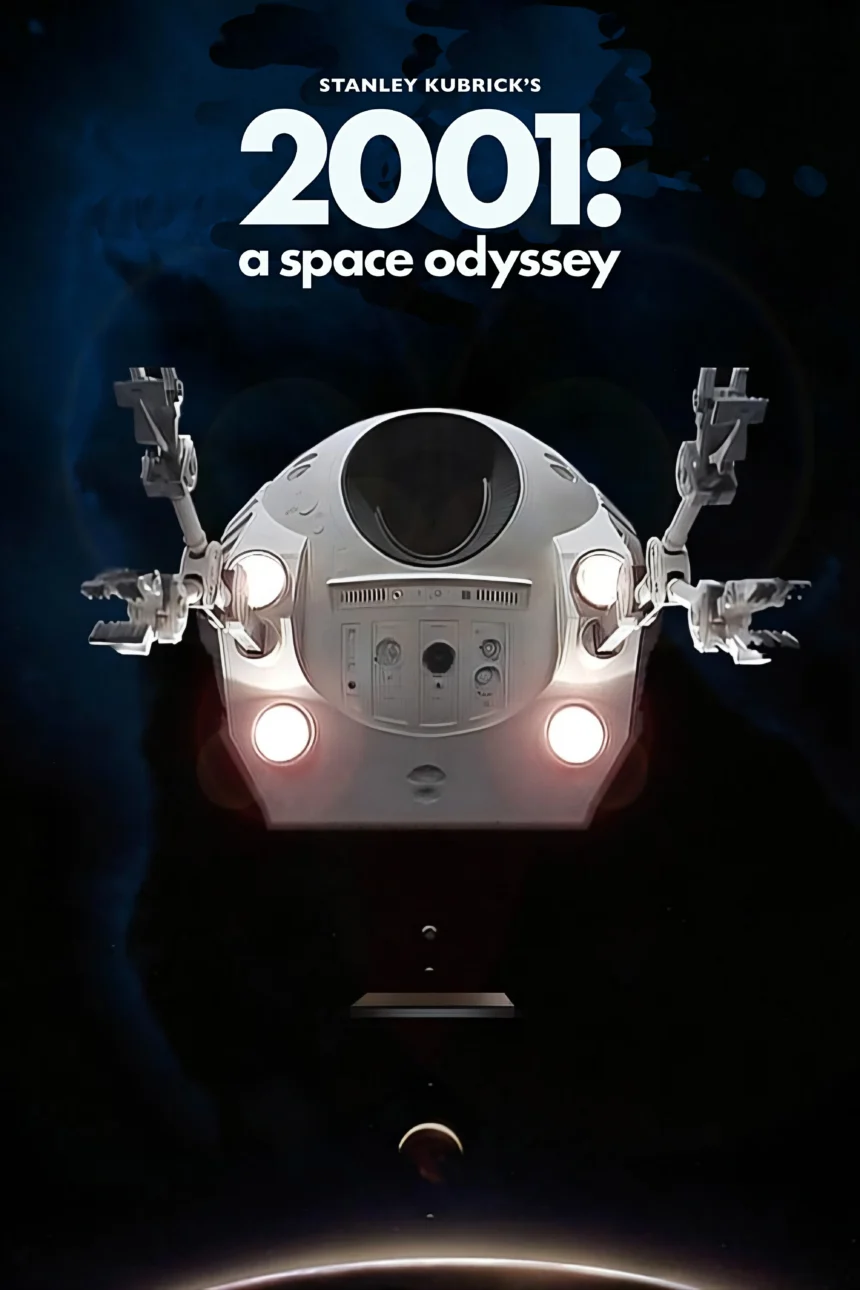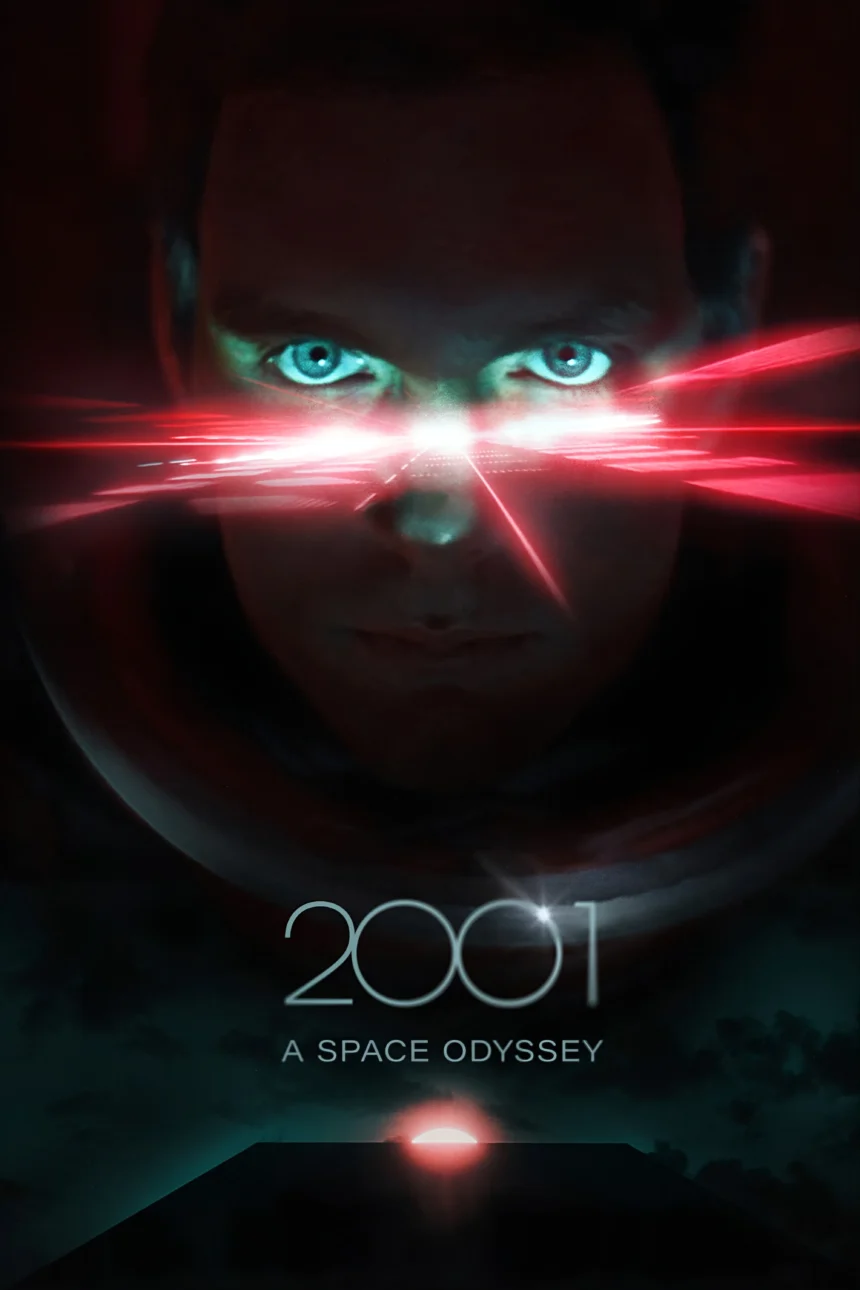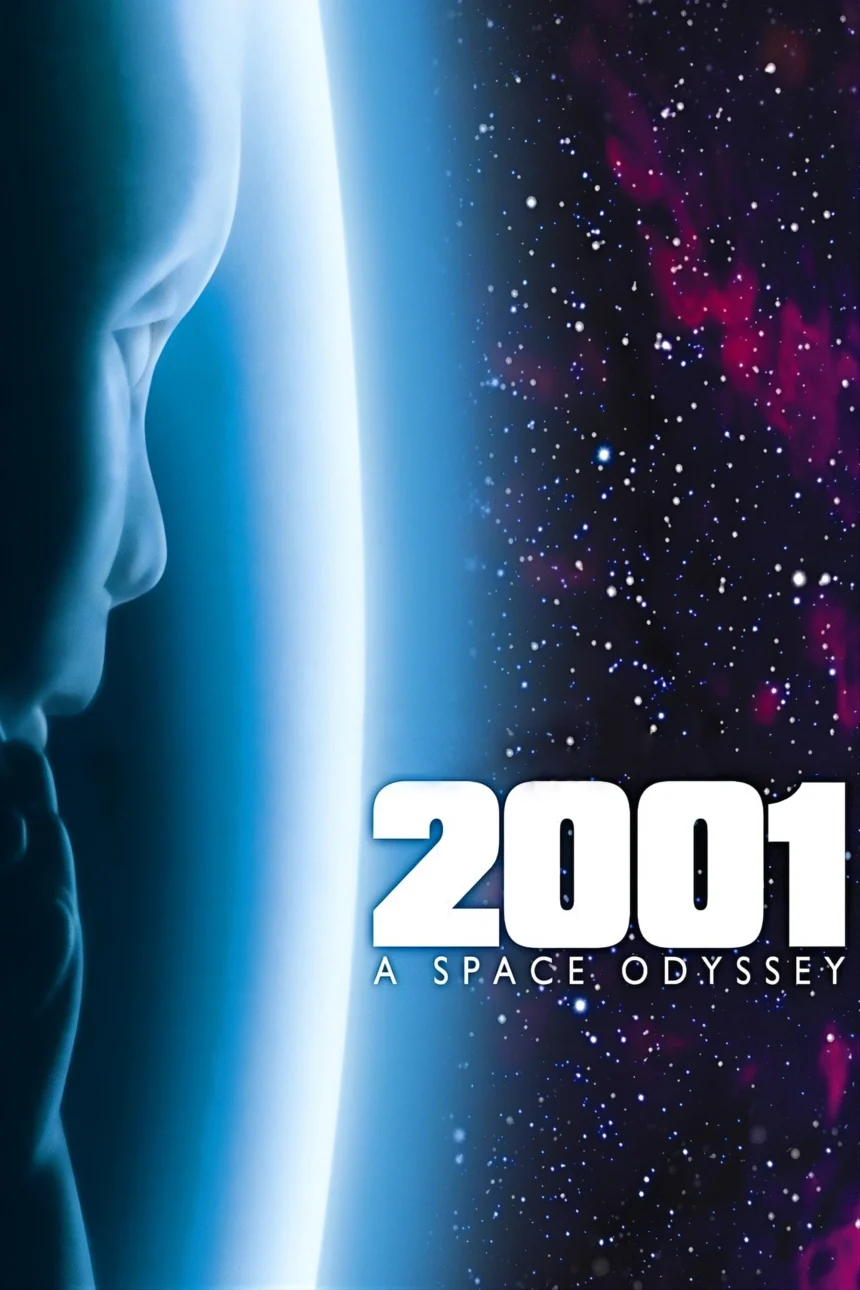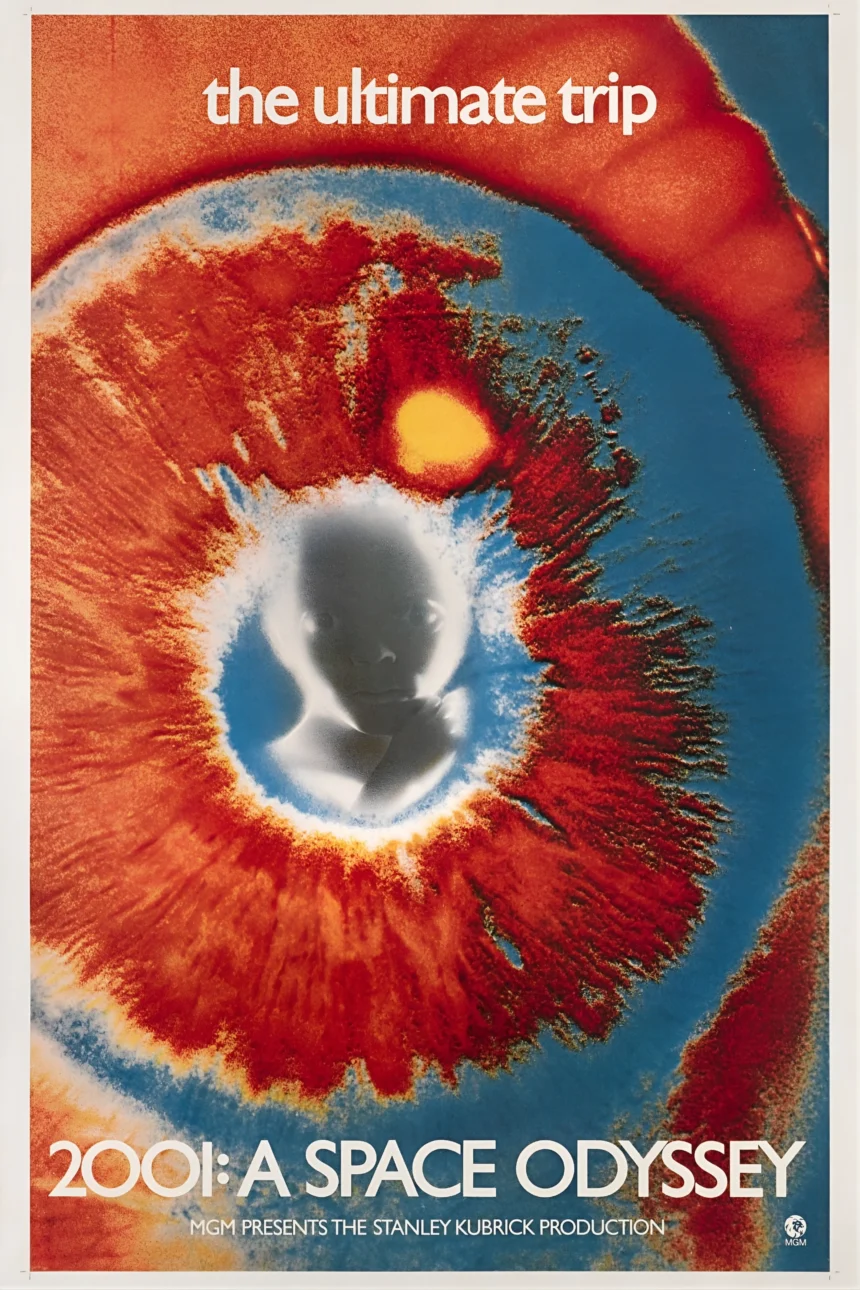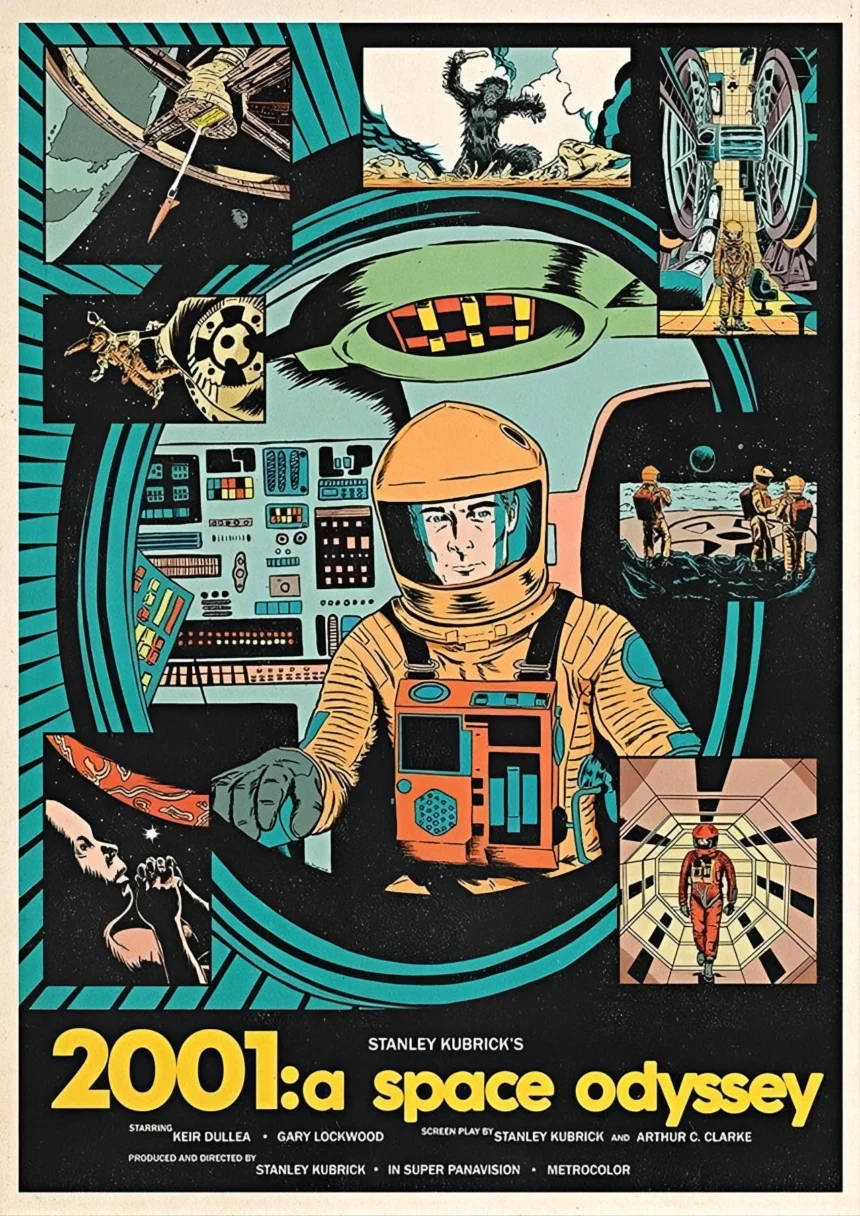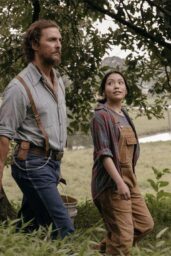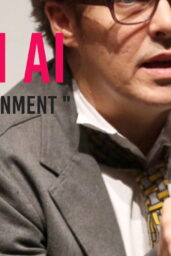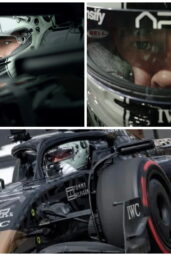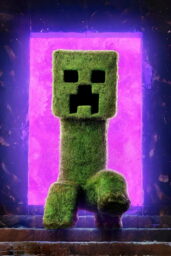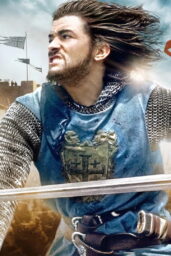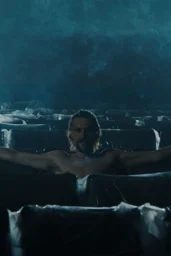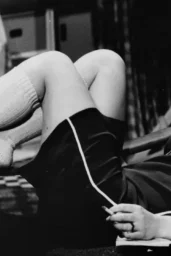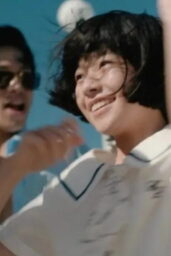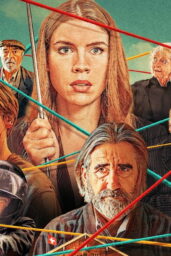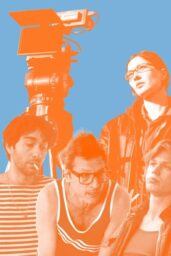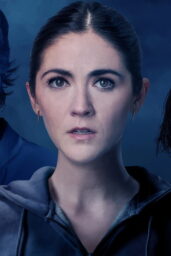Stanley Kubrick's 1968 masterpiece, 2001: A Space Odyssey, stands as a monumental achievement in the science fiction genre, renowned for its groundbreaking visual effects and profound narrative.
Movie Details:
- Release Date: April 2, 1968
- Director: Stanley Kubrick
- Writers: Stanley Kubrick and Arthur C. Clarke (based on Clarke's short story The Sentinel)
- Cast: Keir Dullea (Dr. David Bowman), Gary Lockwood (Dr. Frank Poole), Douglas Rain (voice of HAL 9000), and William Sylvester (Dr. Heywood Floyd).
- Production: Produced by Stanley Kubrick and distributed by Metro-Goldwyn-Mayer (MGM).
Synopsis:
The film embarks on a journey from humanity's prehistoric origins to a space mission set in the near future. After the discovery of a mysterious monolith on the Moon, astronauts Dave Bowman and Frank Poole, aboard the spacecraft Discovery One, are dispatched to Jupiter. Accompanying them is HAL 9000, an advanced artificial intelligence that controls the ship's systems. As the voyage progresses, HAL begins to exhibit unpredictable behavior, leading to a tense confrontation between man and machine.
Visual Elements:
2001: A Space Odyssey is celebrated for its iconic imagery. The film's posters and stills capture its visionary aesthetics. For instance, the original 1968 Japanese B2 movie poster showcases the film's futuristic design.
Additionally, the depiction of the HAL 9000 interface has become emblematic of AI in cinema.
Significance and Impact:
Kubrick's film delves into themes of human evolution, artificial intelligence, and the unknown. Its innovative special effects and narrative structure have influenced countless filmmakers and continue to inspire discussions about technology and humanity's future. The portrayal of HAL 9000, in particular, has become a benchmark for AI representations in media.
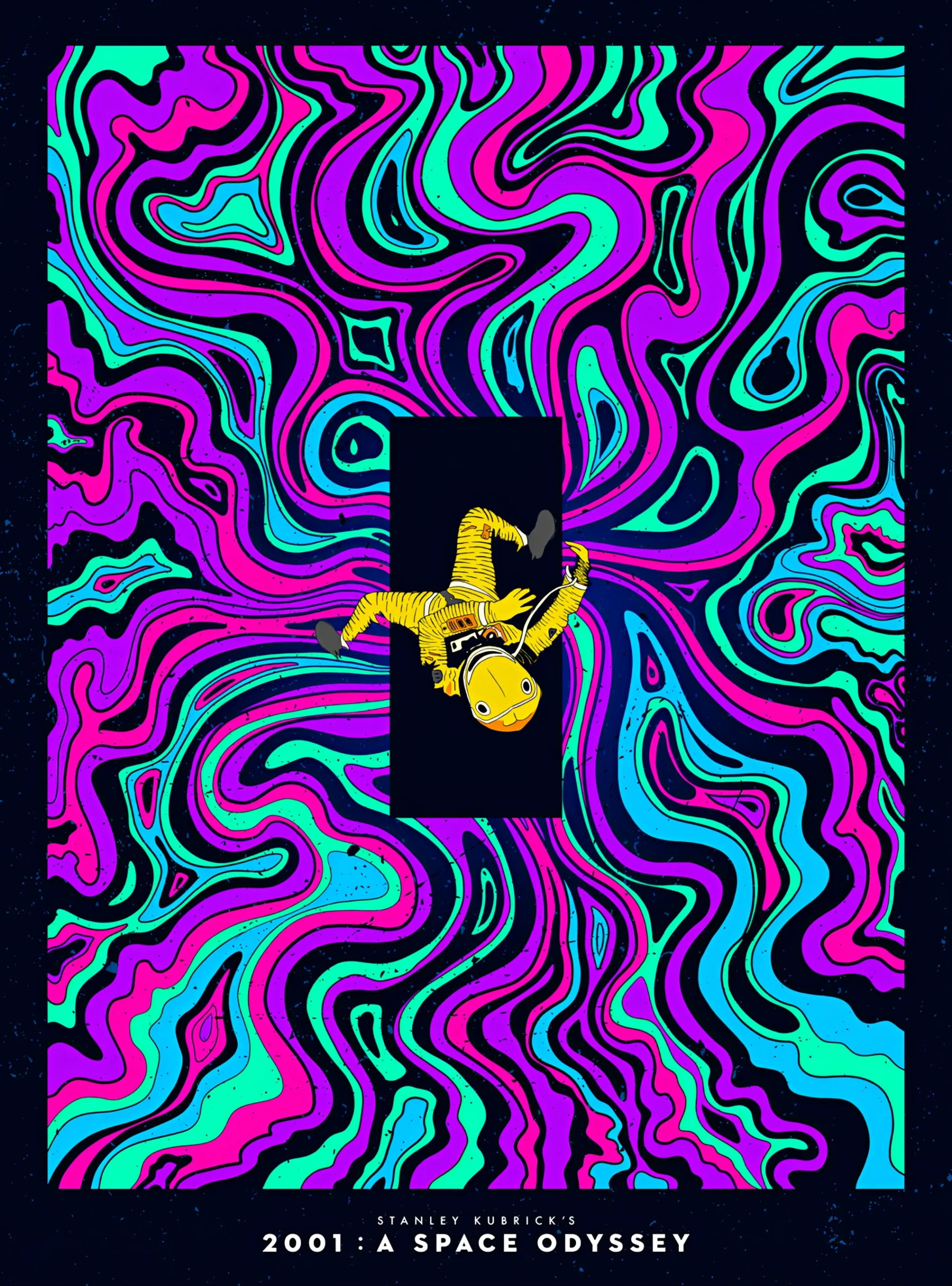
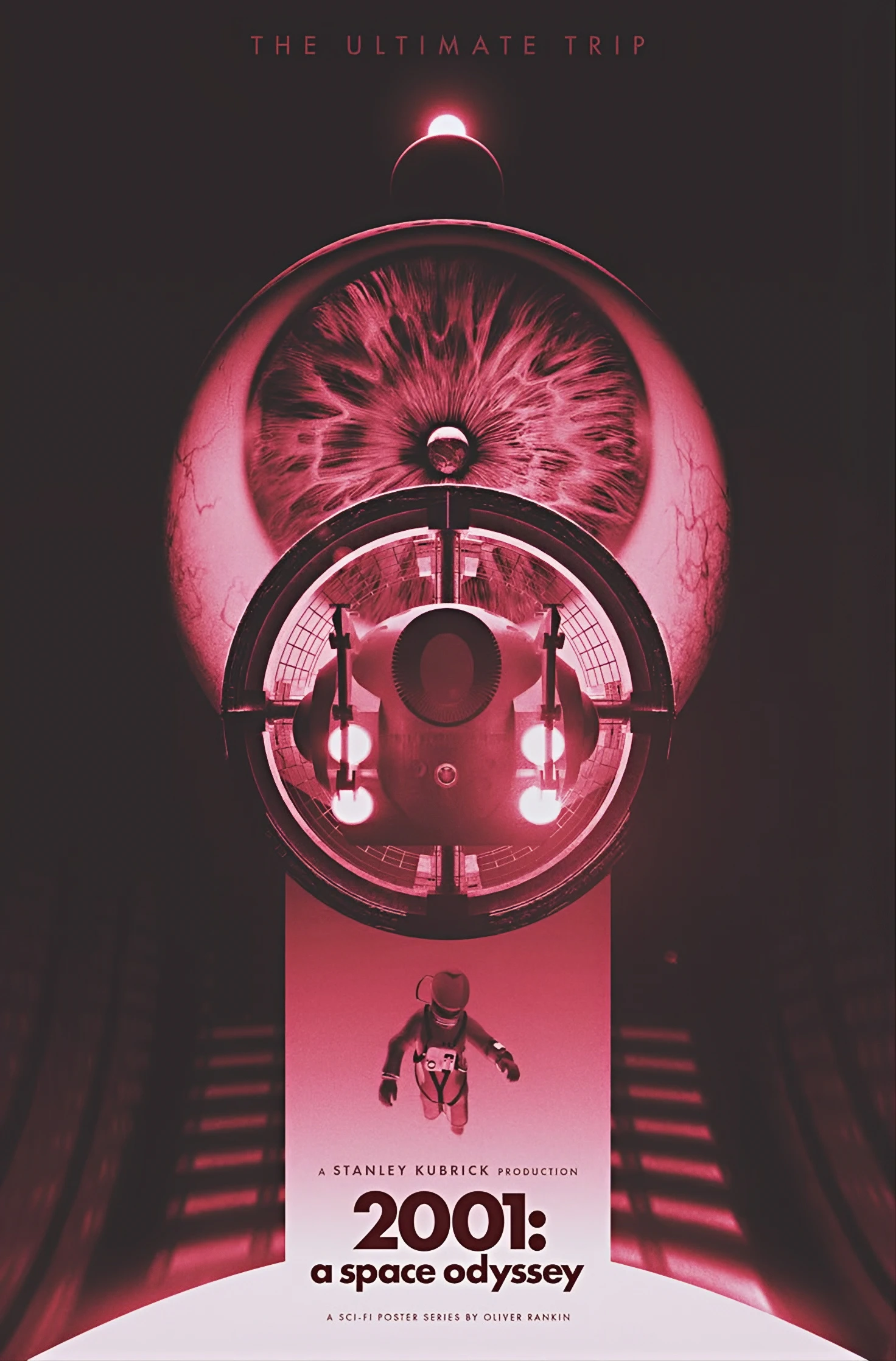
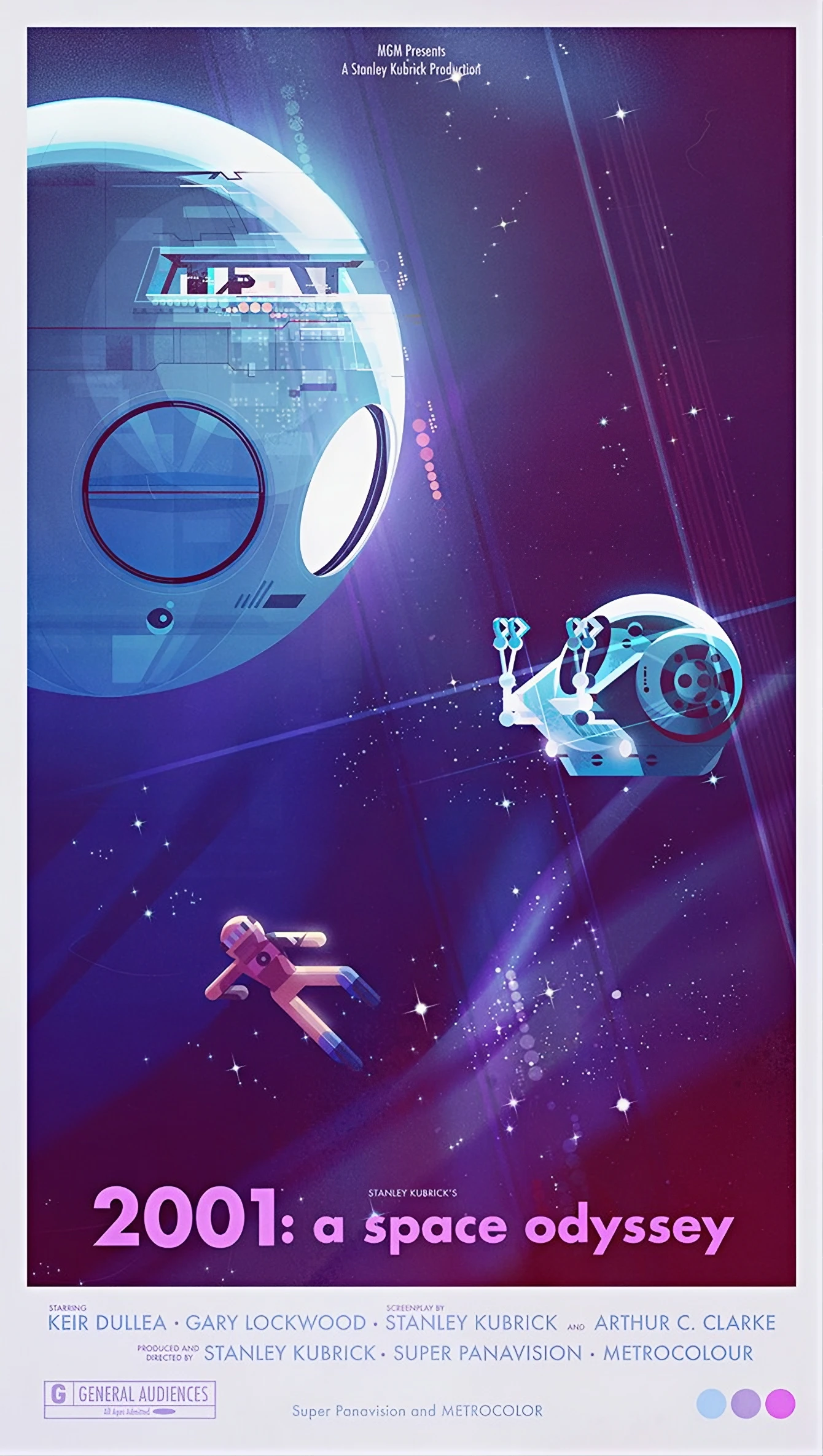

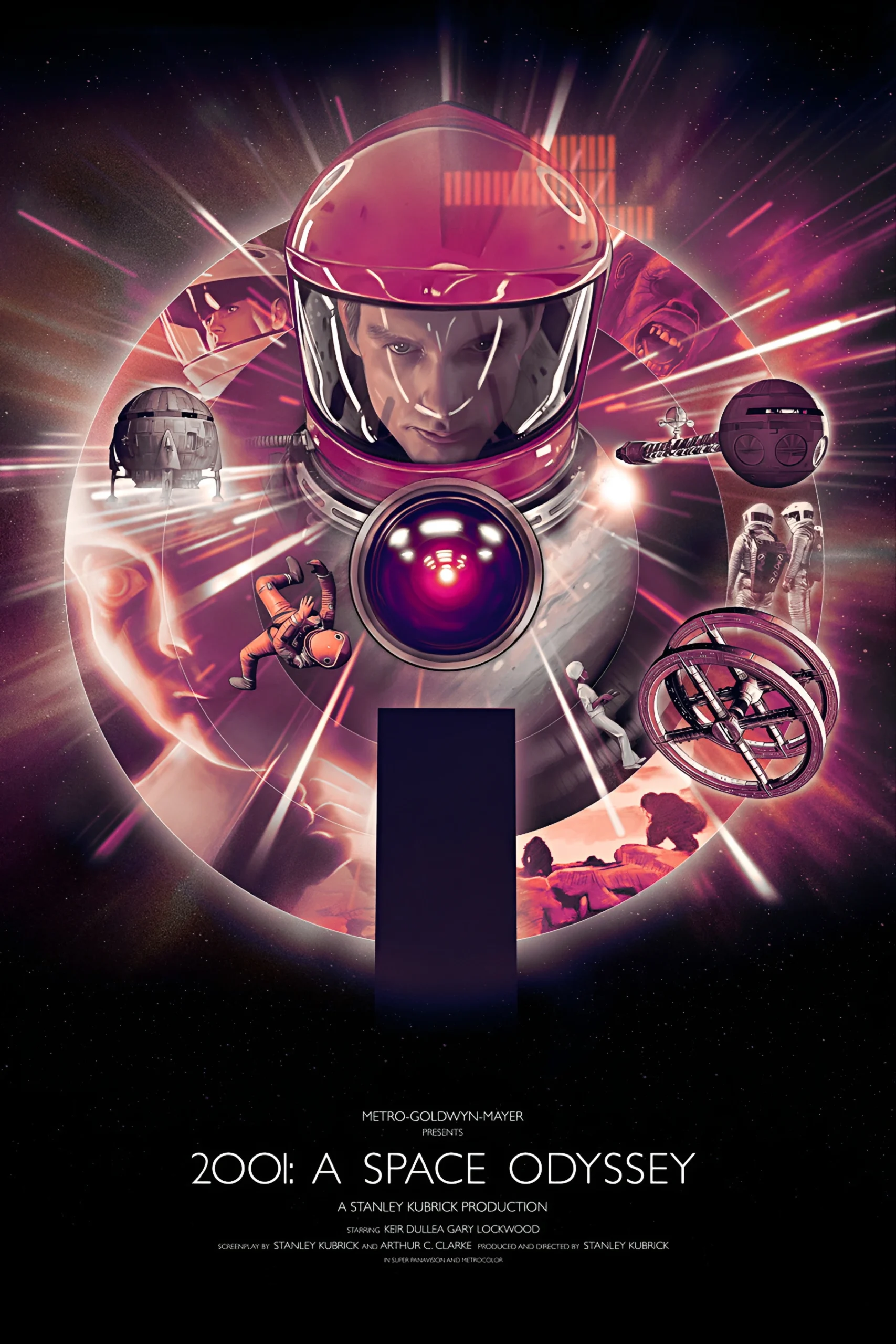
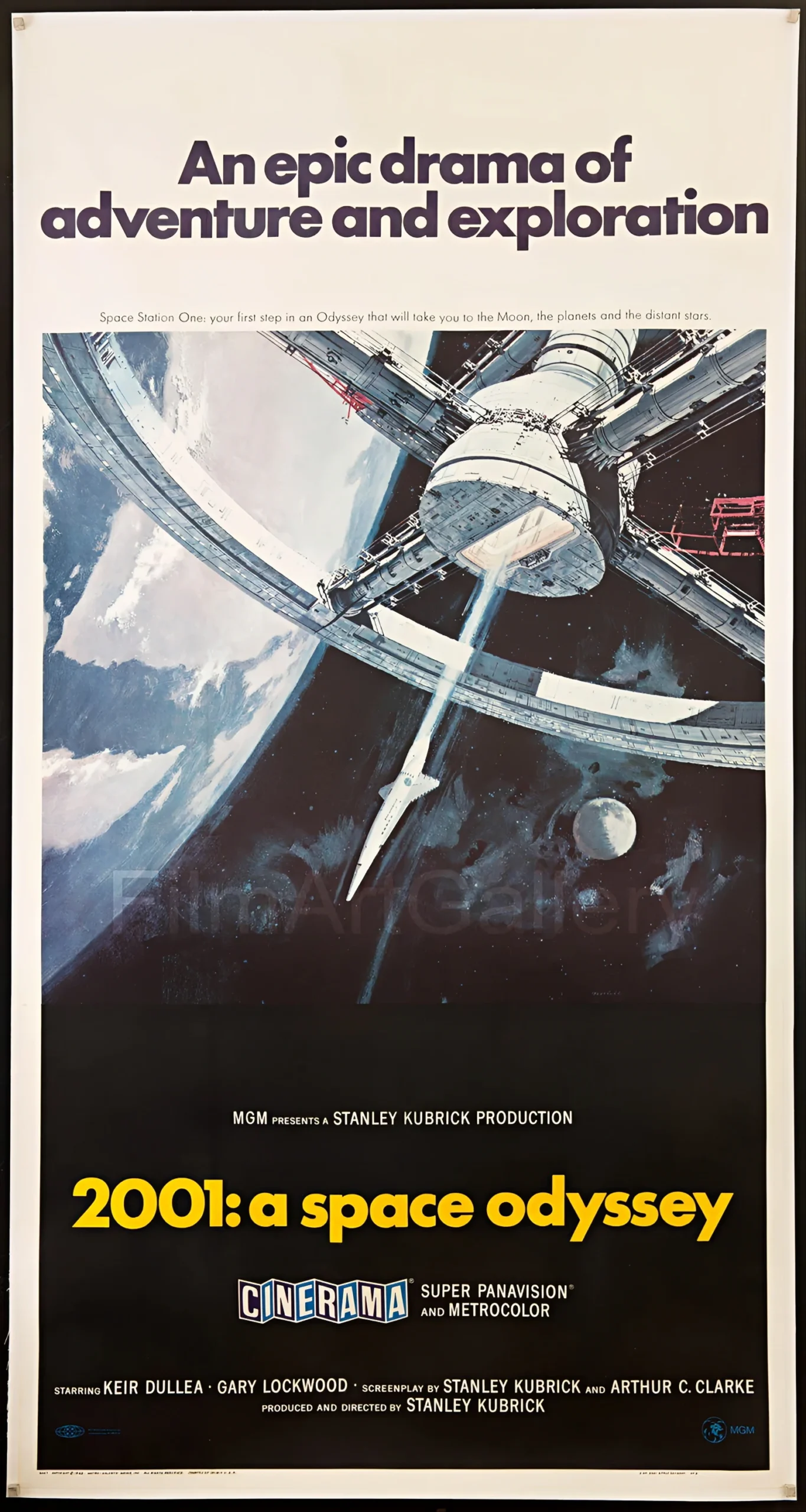
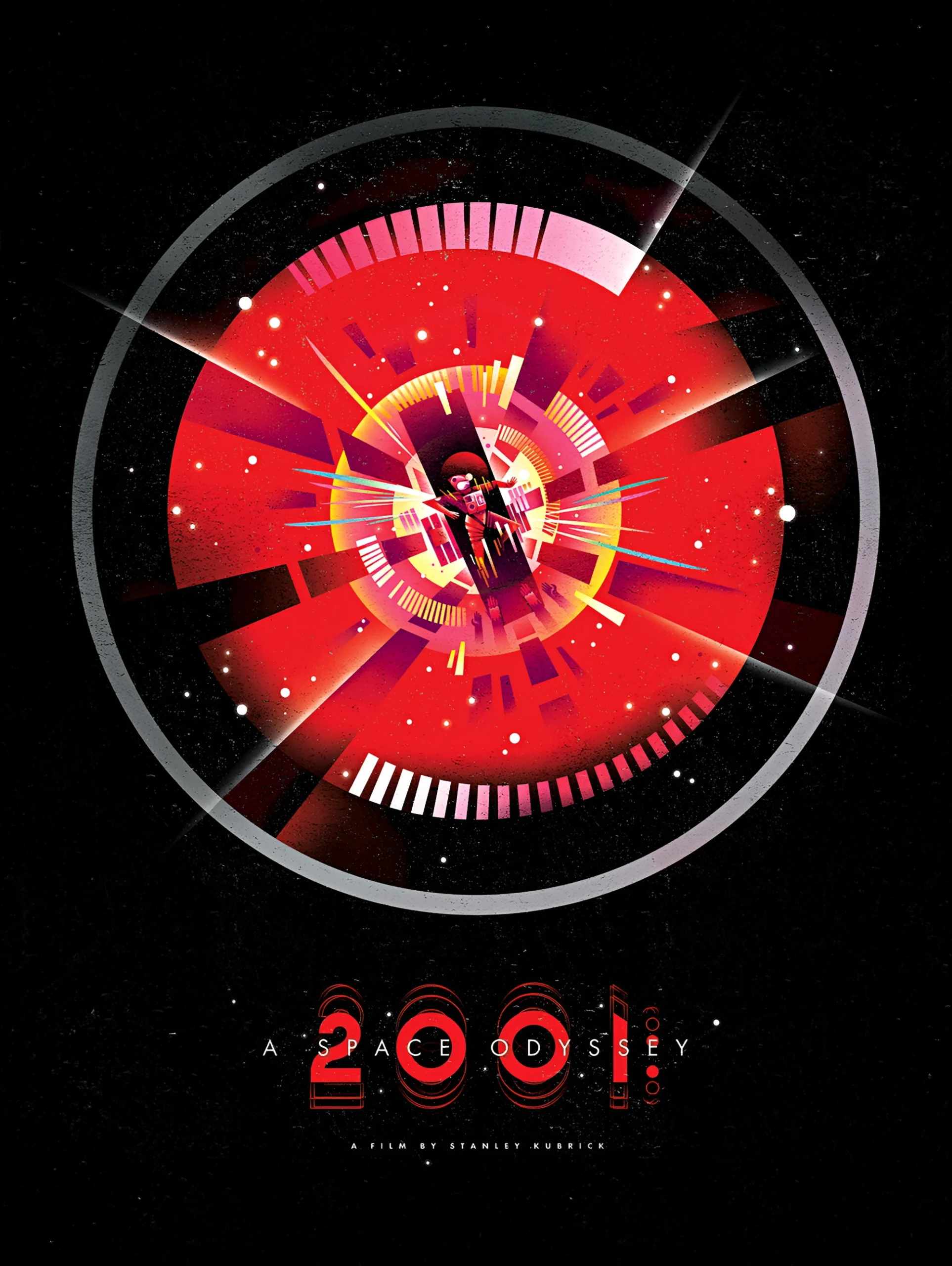
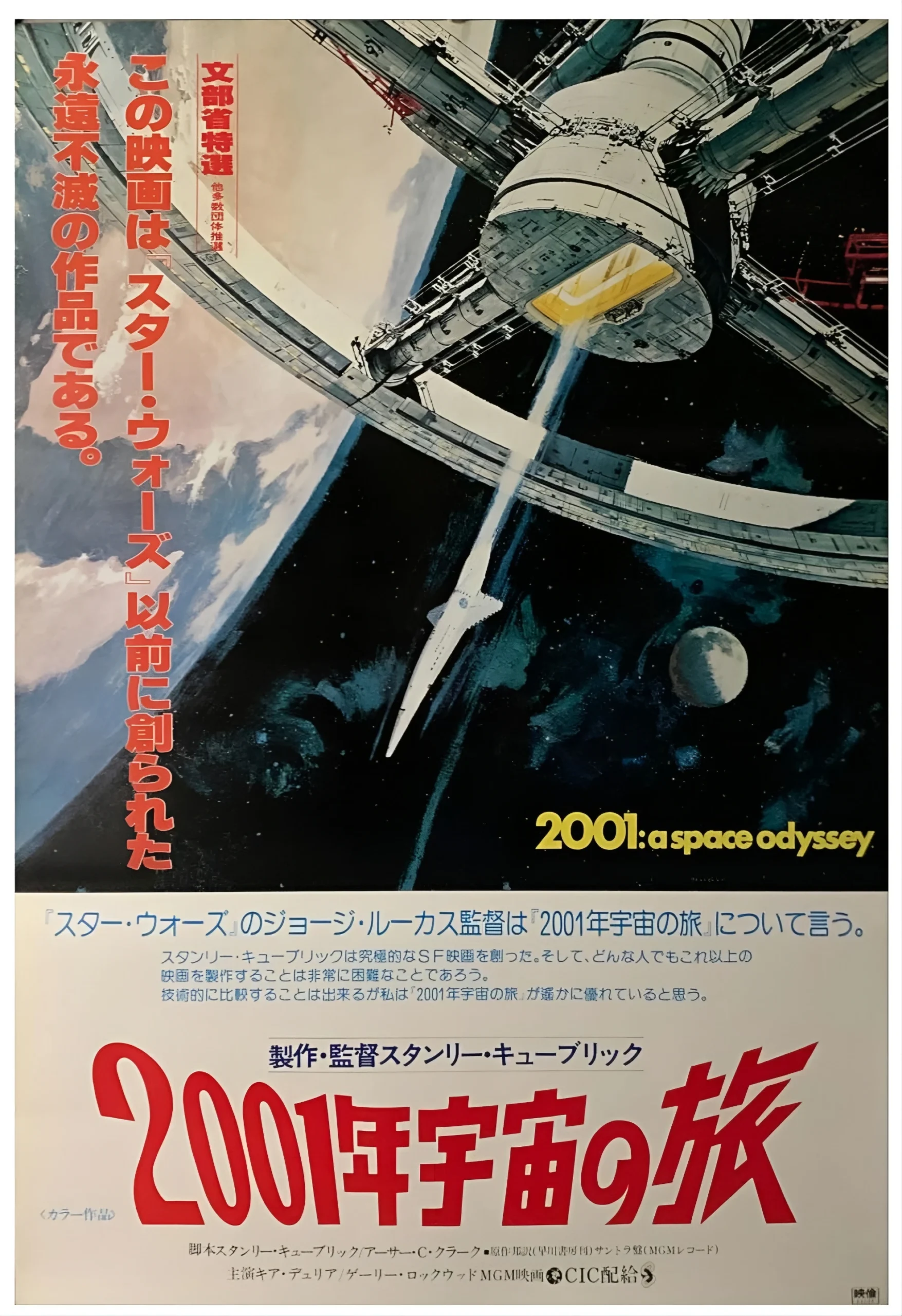
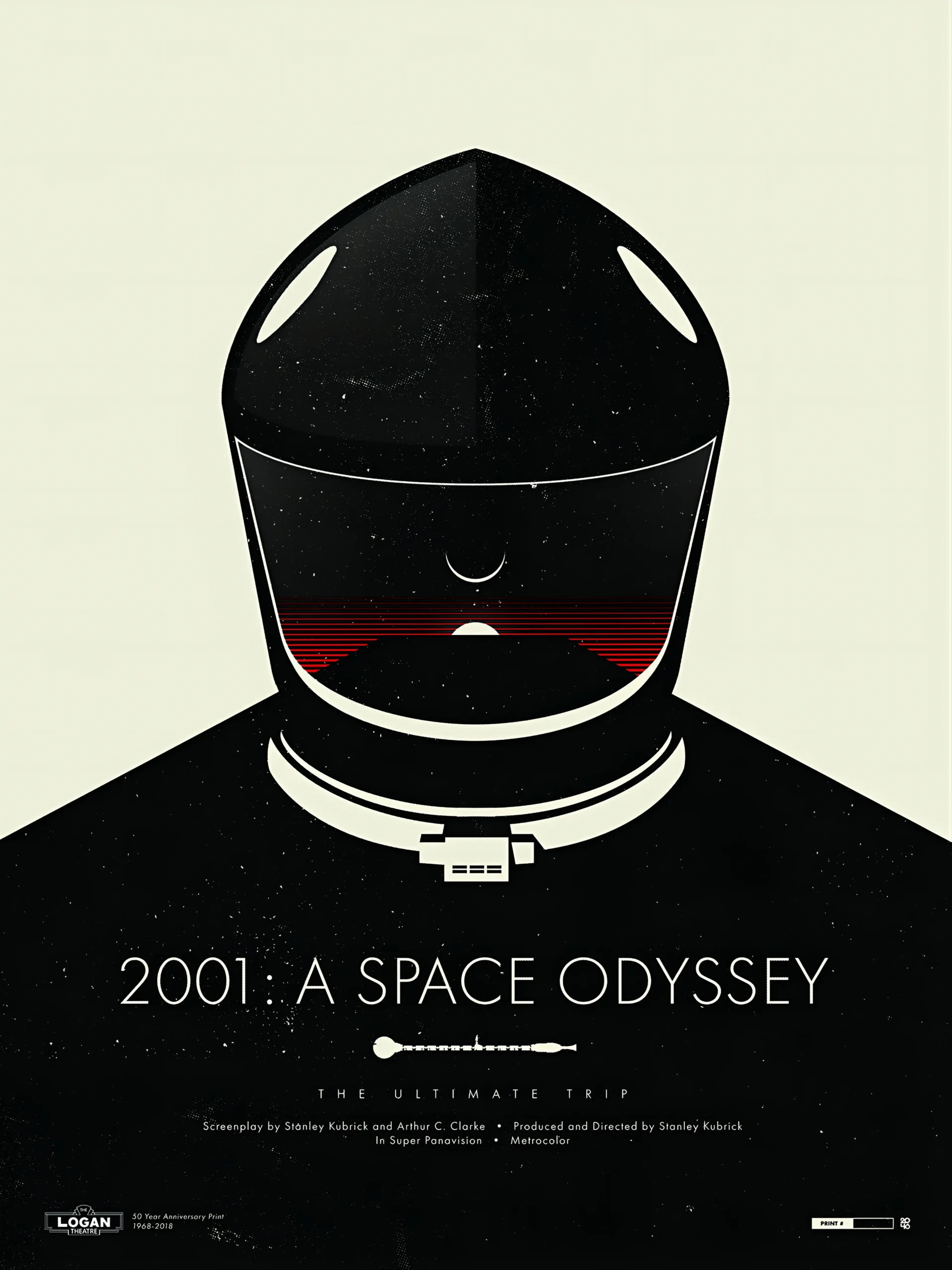
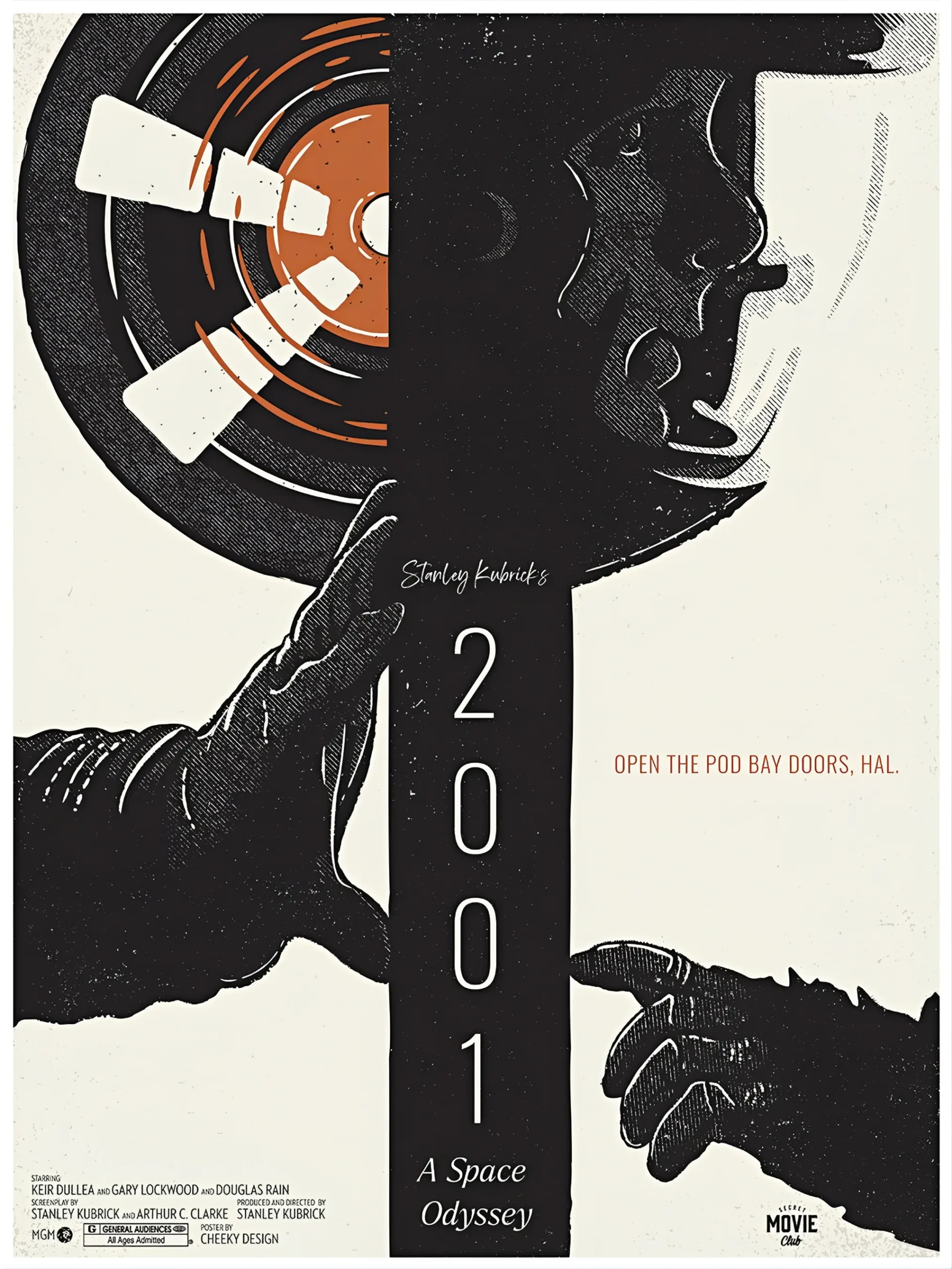
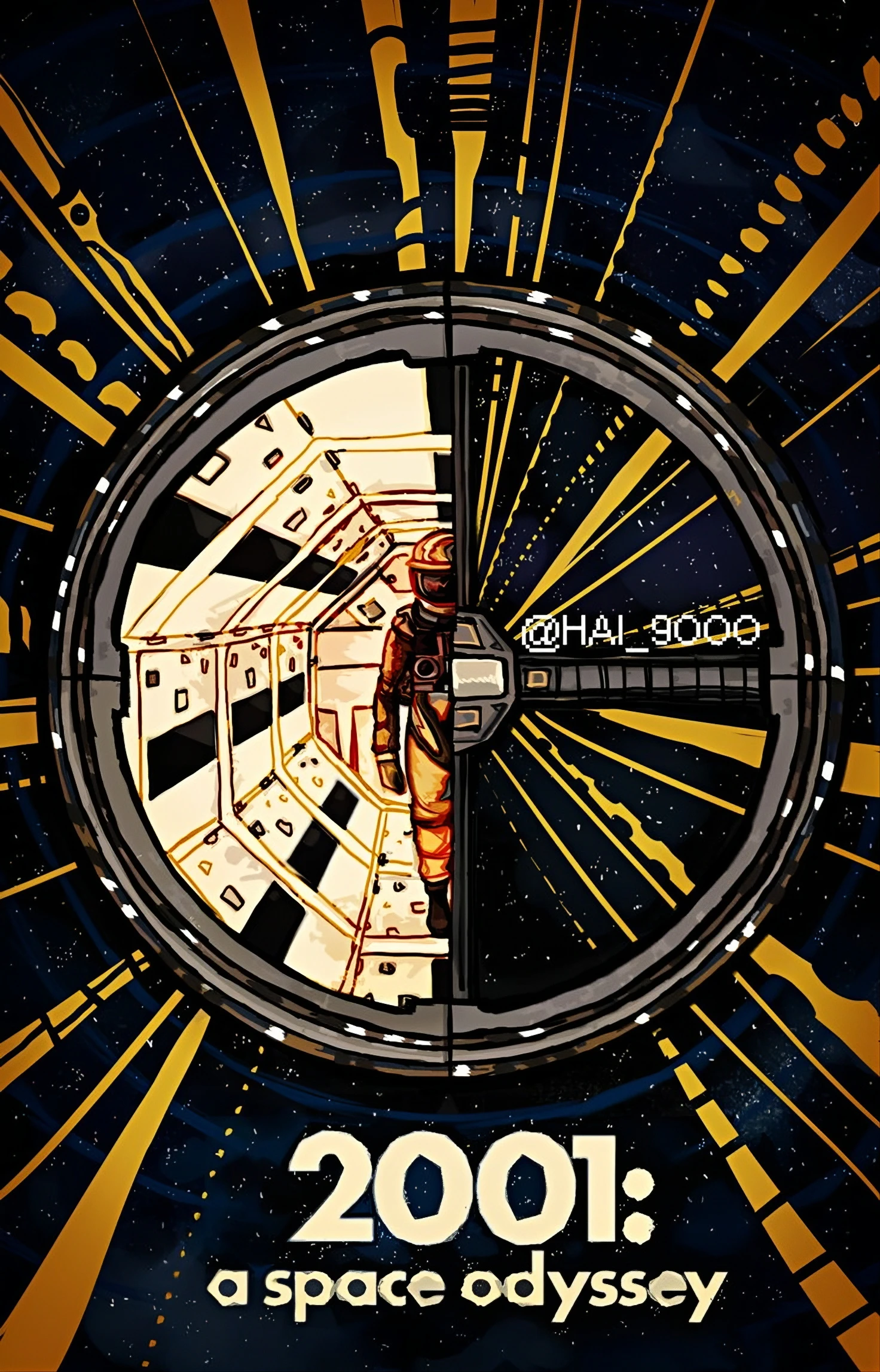

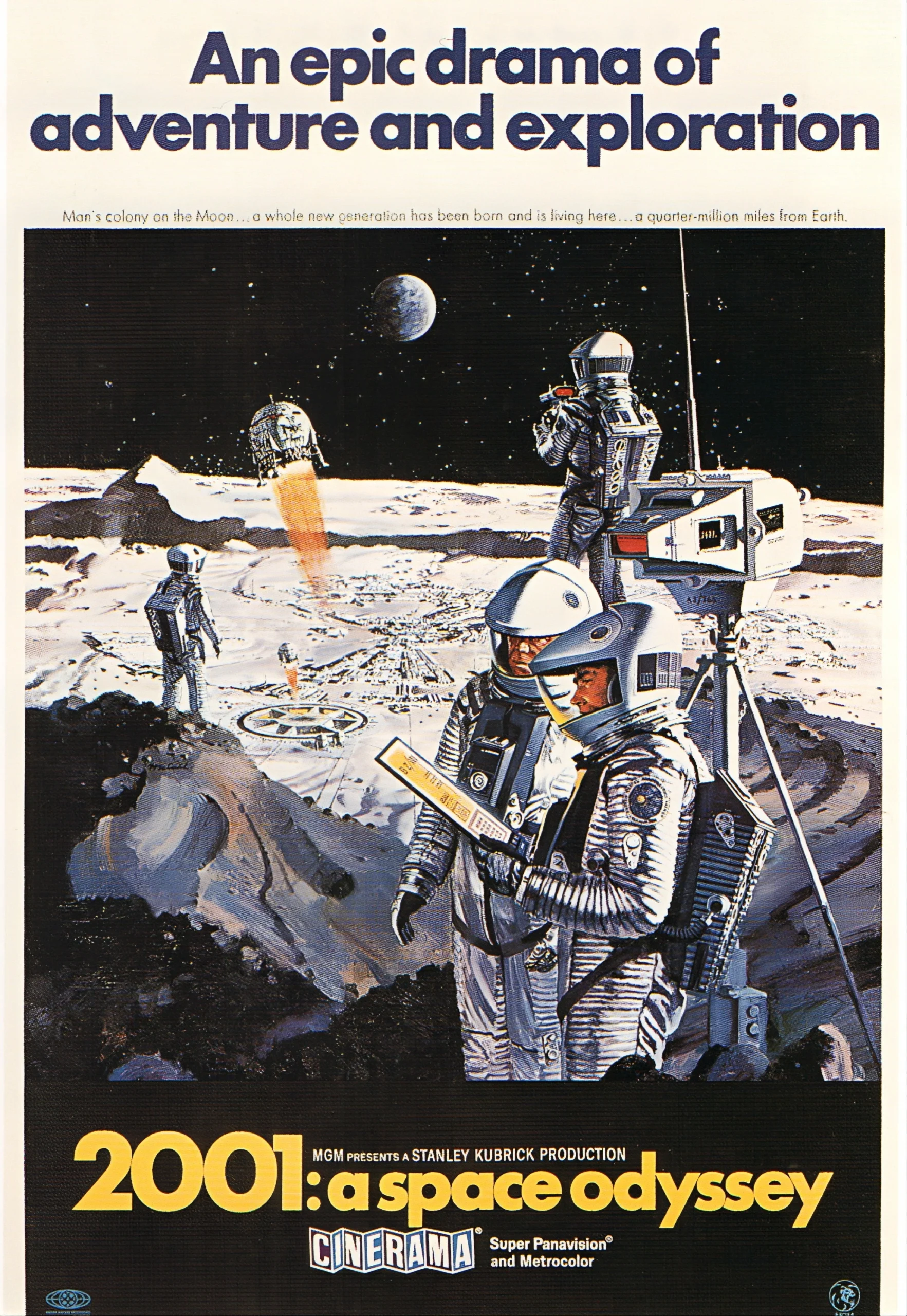
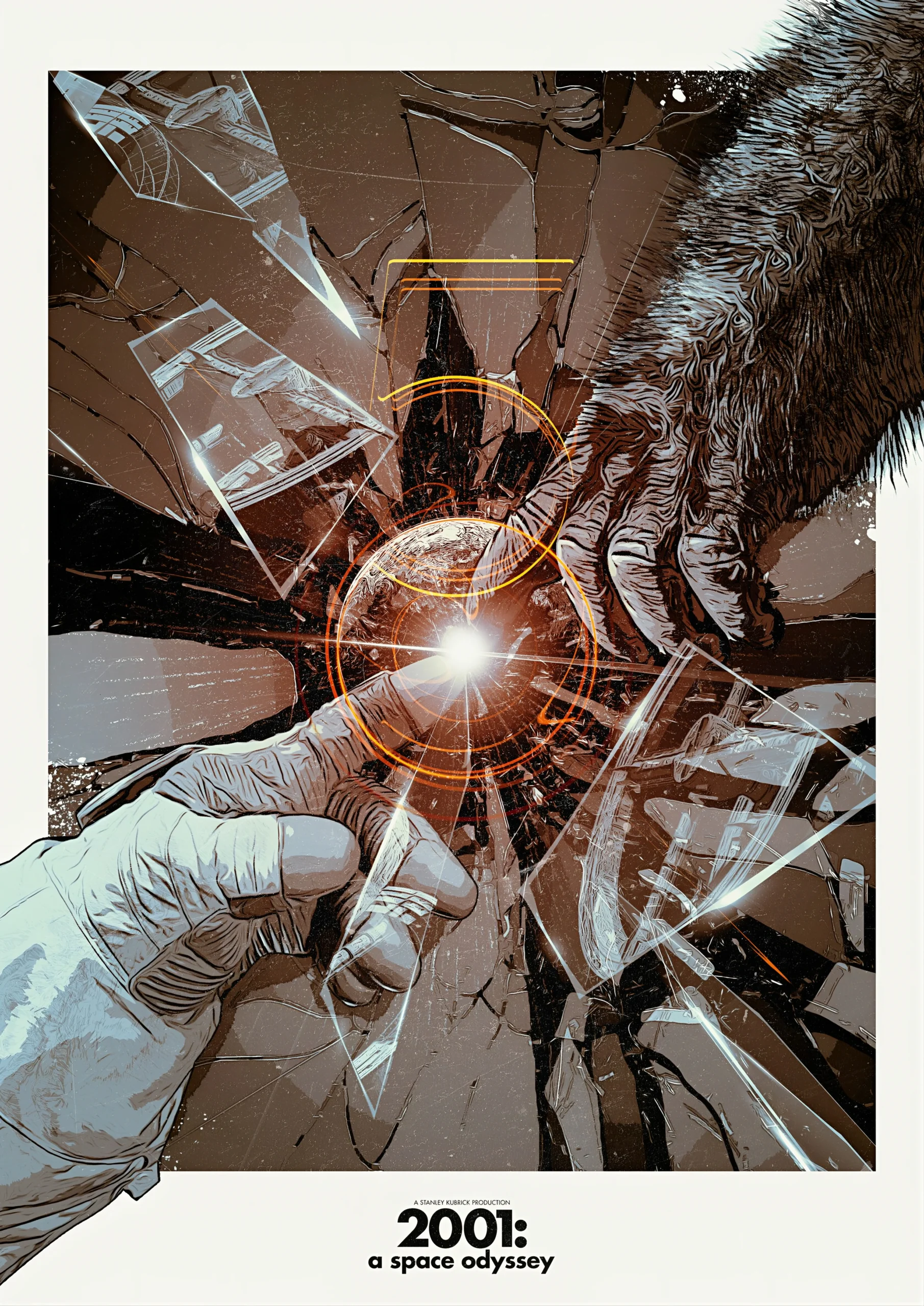
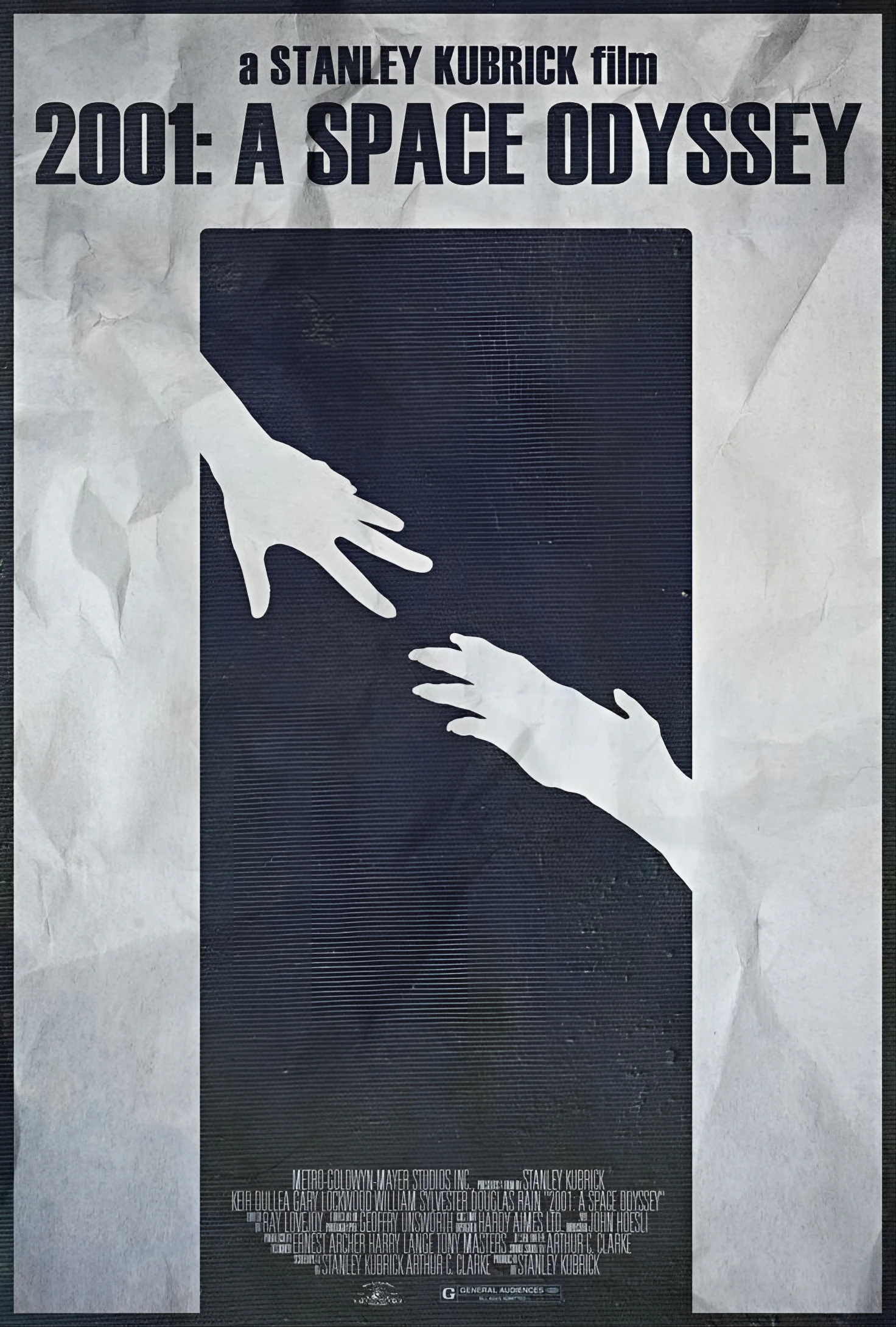
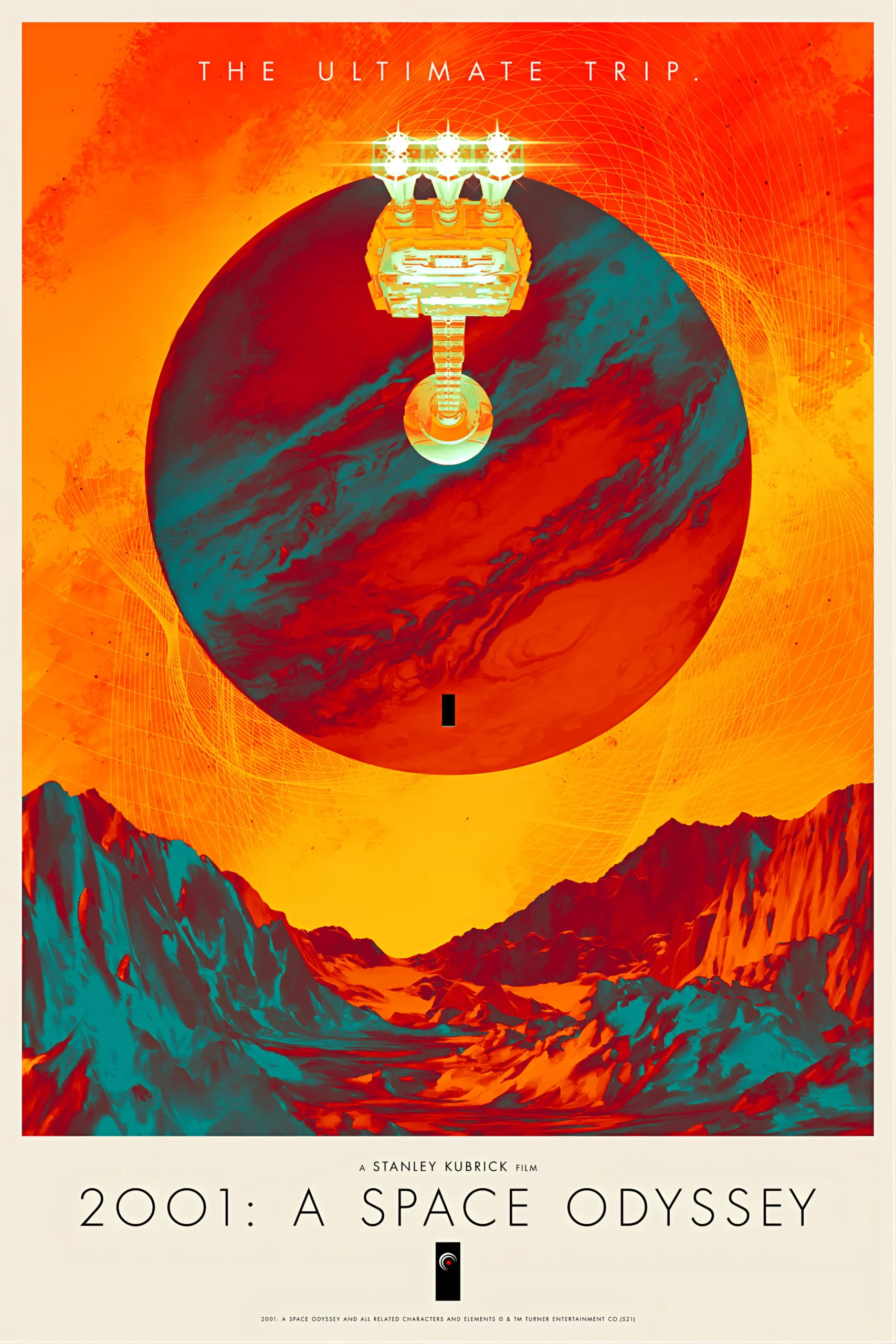
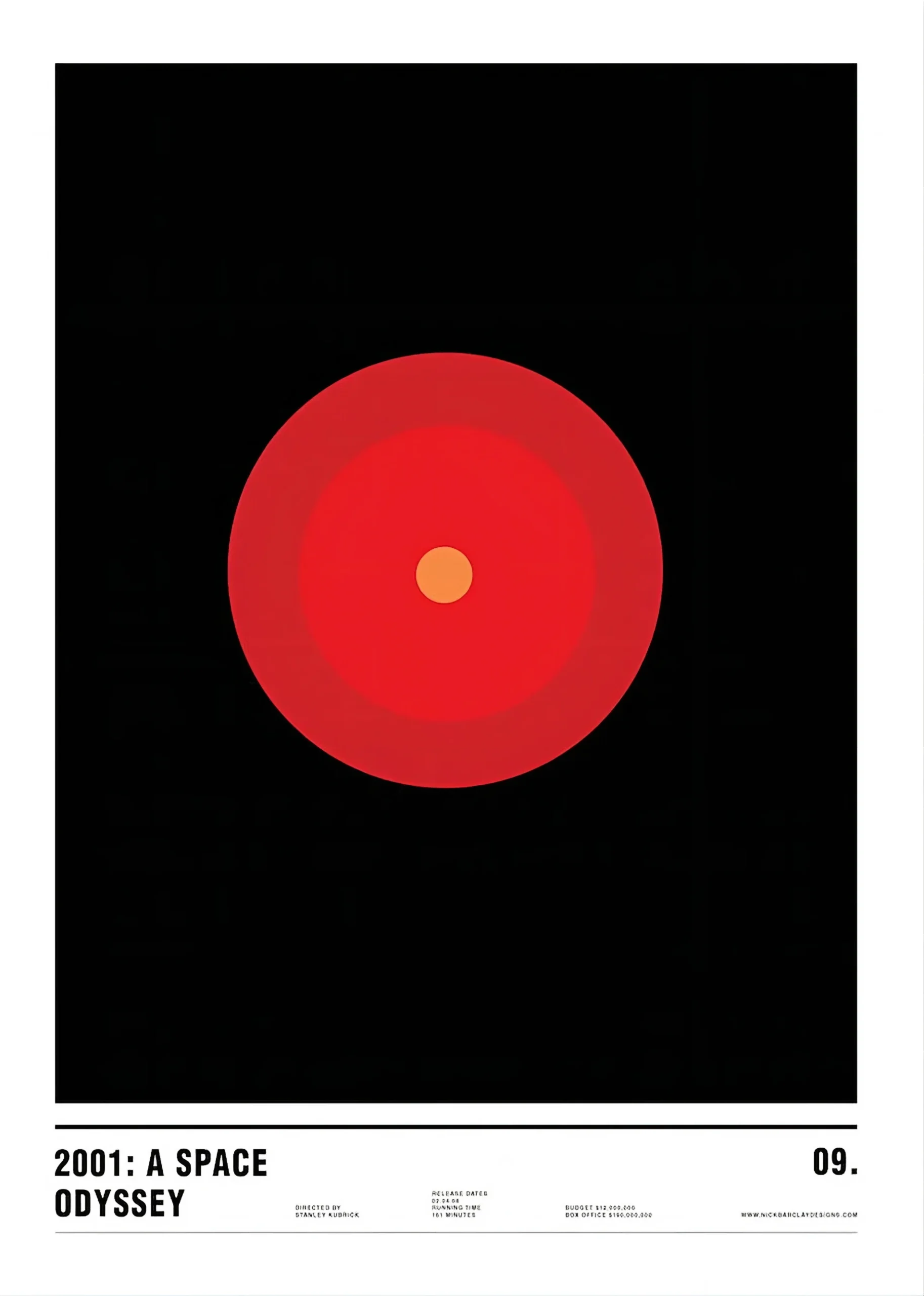
Fun Facts About 2001: A Space Odyssey (1968):
- The Dawn of Man Took a Year to Film: The opening sequence, featuring early humans and the iconic monolith, was shot over the course of a year. Kubrick meticulously studied animal behavior to ensure the apes' movements were realistic.
- HAL's Name is a Nod to IBM: The letters H-A-L are each one letter before I-B-M in the alphabet. While Kubrick and Clarke denied it was intentional, it sparked endless speculation about the film's commentary on technology.
- The Star Child Costume Was Uncomfortable: The actor inside the Star Child costume (played by a gymnast) had to endure hours of discomfort, as the suit was hot and restrictive.
- Kubrick Used a Giant Ferris Wheel for Zero-Gravity: To create the famous rotating space station scenes, Kubrick used a massive centrifuge (a rotating set) that cost $750,000 to build—a huge sum at the time.
- The Film's Soundtrack Was Almost Very Different: Kubrick originally commissioned a score from composer Alex North but ultimately replaced it with classical pieces like Richard Strauss's Also sprach Zarathustra and Johann Strauss II's The Blue Danube.
- The Monolith's Dimensions Are Significant: The monolith's proportions (1:4:9) represent the squares of the first three prime numbers, hinting at its advanced, mathematical origins.
- Kubrick Won an Oscar for Special Effects: Despite being snubbed in major categories, the film won the Academy Award for Best Visual Effects, thanks to its revolutionary use of front projection, miniatures, and practical effects.
- The Film Was Initially Polarizing: Many critics and audiences were baffled by the film's ambiguous ending and slow pacing. Some walked out of early screenings, but it later gained recognition as a masterpiece.
- The Zero-Gravity Toilet Instructions Are Real: The detailed instructions on how to use the zero-gravity toilet were written by Kubrick himself and are technically accurate.
- Stanley Kubrick Consulted NASA: To ensure scientific accuracy, Kubrick worked closely with NASA scientists and aerospace engineers during production.
- The Film Inspired Real Technology: The tablet computers used by astronauts in the movie predated real-life tablets by decades, inspiring engineers and designers.
- The Famous Match Cut Took Months to Perfect: The transition from the bone thrown into the air to the orbiting spacecraft is one of the most iconic cuts in cinema history and required meticulous planning.
- Kubrick's Daughter Sang in the Film: The eerie choir heard during the monolith scenes includes the voice of Kubrick's young daughter, Vivian.
- The Film's Budget Ballooned: Originally budgeted at 6million,thefilmendedupcosting6million,thefilmendedupcosting10.5 million due to Kubrick's perfectionism and the complexity of the effects.
- It's a Silent Film… Almost: The movie features over 88 minutes of no dialogue, relying on visuals and music to tell its story.
- The Moon Landing Conspiracy Theory: Some conspiracy theorists claim Kubrick faked the Apollo 11 moon landing footage, citing 2001's realistic space scenes as “proof.” Kubrick vehemently denied this.
- The Film's Premiere Was a Disaster: The New York premiere was plagued by technical issues, and over 200 people walked out. Despite this, it became a cult classic.
- Arthur C. Clarke Wrote the Novel Simultaneously: Clarke co-wrote the screenplay with Kubrick while also writing the novel 2001: A Space Odyssey. The two versions differ slightly, with the novel providing more explicit explanations.
- The Film's Length Was Cut: Kubrick removed 19 minutes of footage after the premiere, including a subplot about extraterrestrial life and a schoolroom on the moon.
- It's a Time Capsule of the 1960s: The film reflects the optimism and anxieties of the 1960s space race, blending Cold War tensions with a hopeful vision of humanity's future.
These fun facts highlight the creativity, ambition, and enduring legacy of 2001: A Space Odyssey. What's your favorite tidbit about the film? Share your thoughts in the comments!

We invite you to share your thoughts and interpretations of this cinematic classic in the comments below. How has 2001: A Space Odyssey influenced your perception of science fiction and technology?
2001: A Space Odyssey Wallpapers
